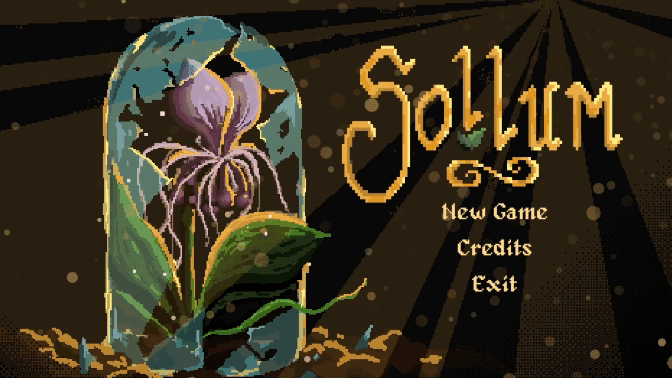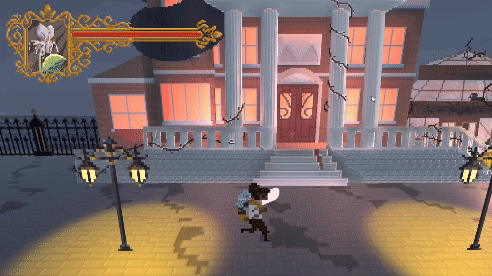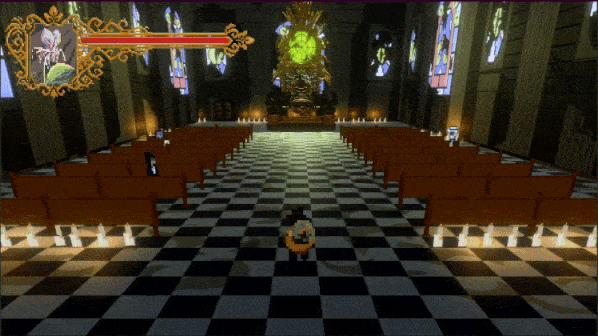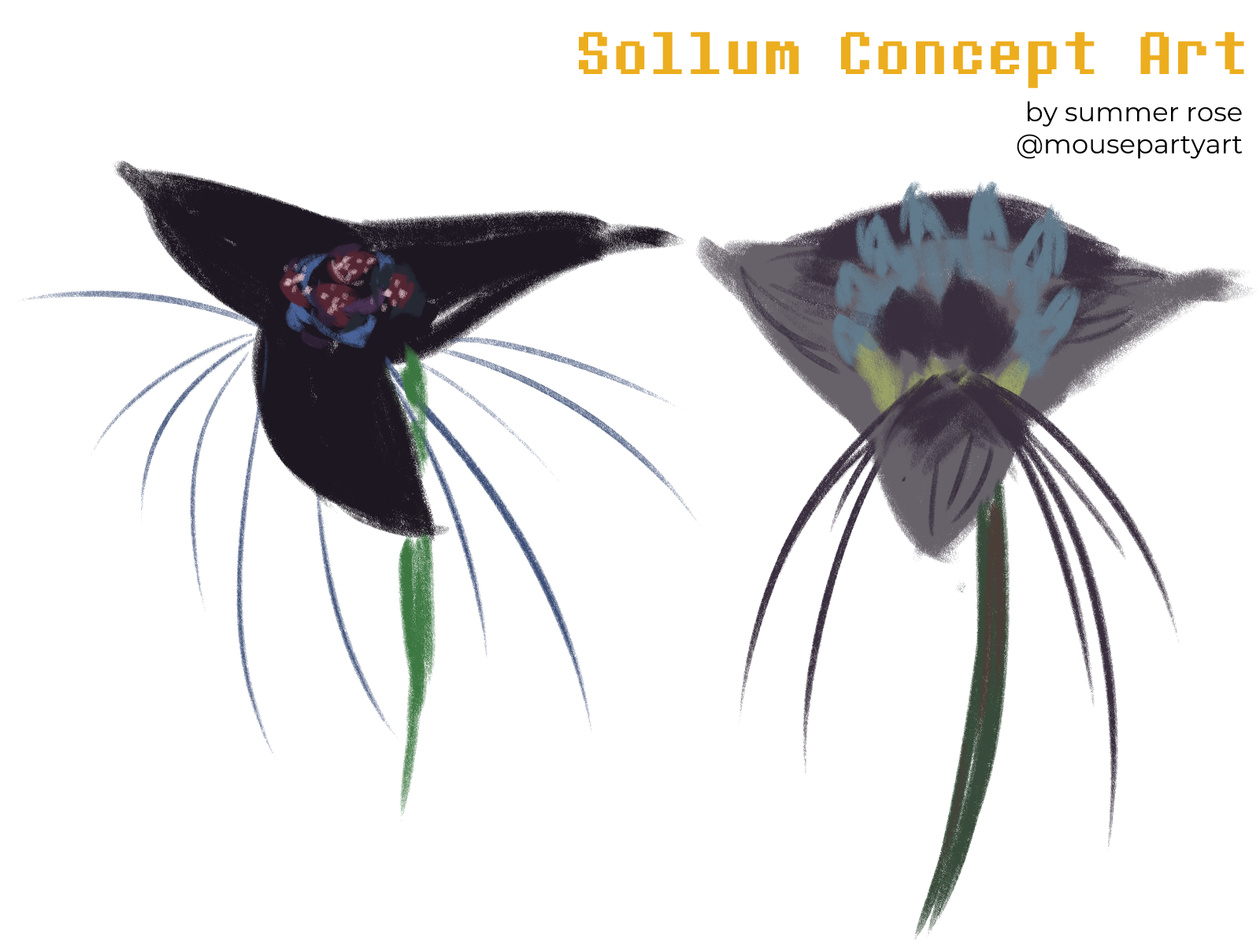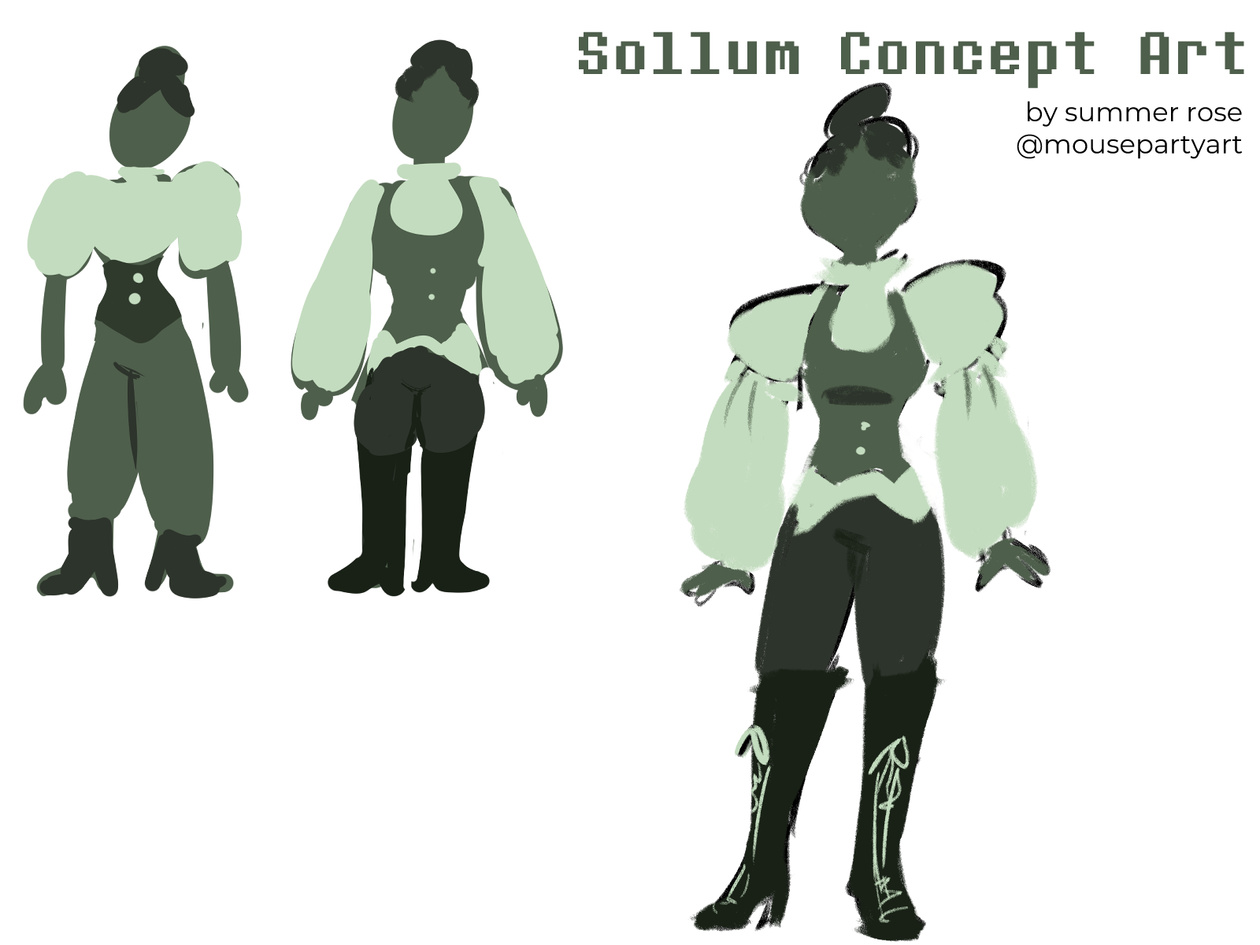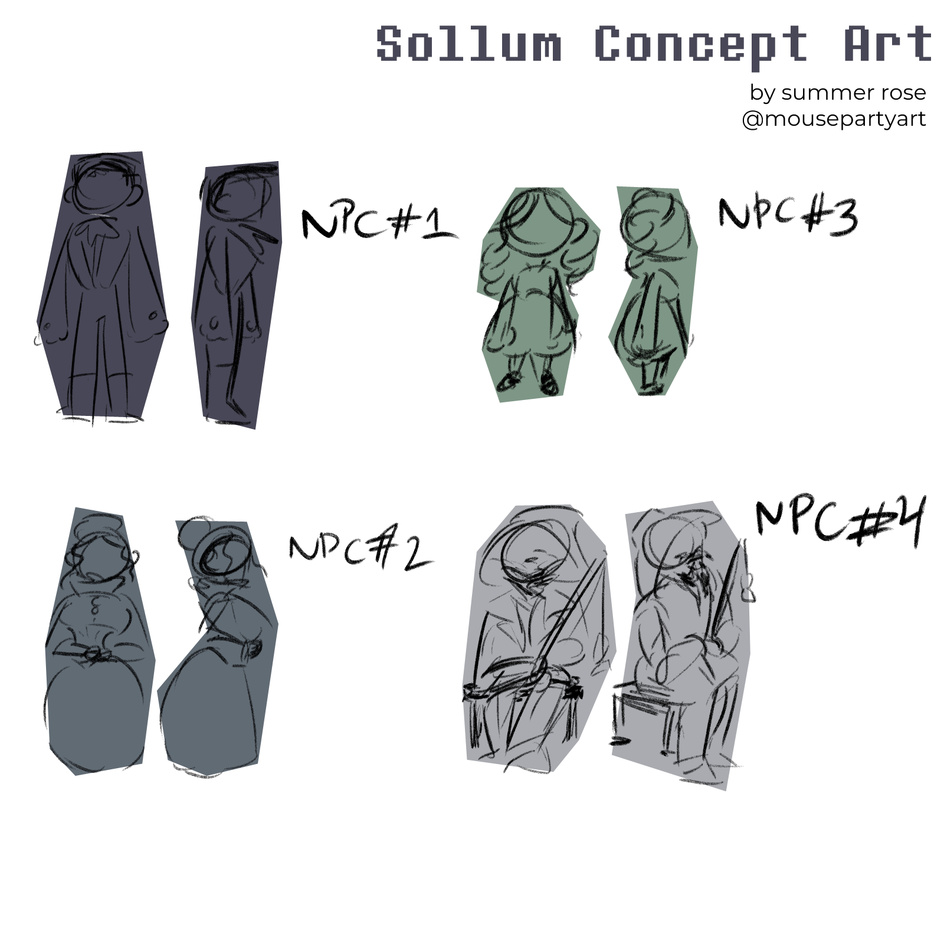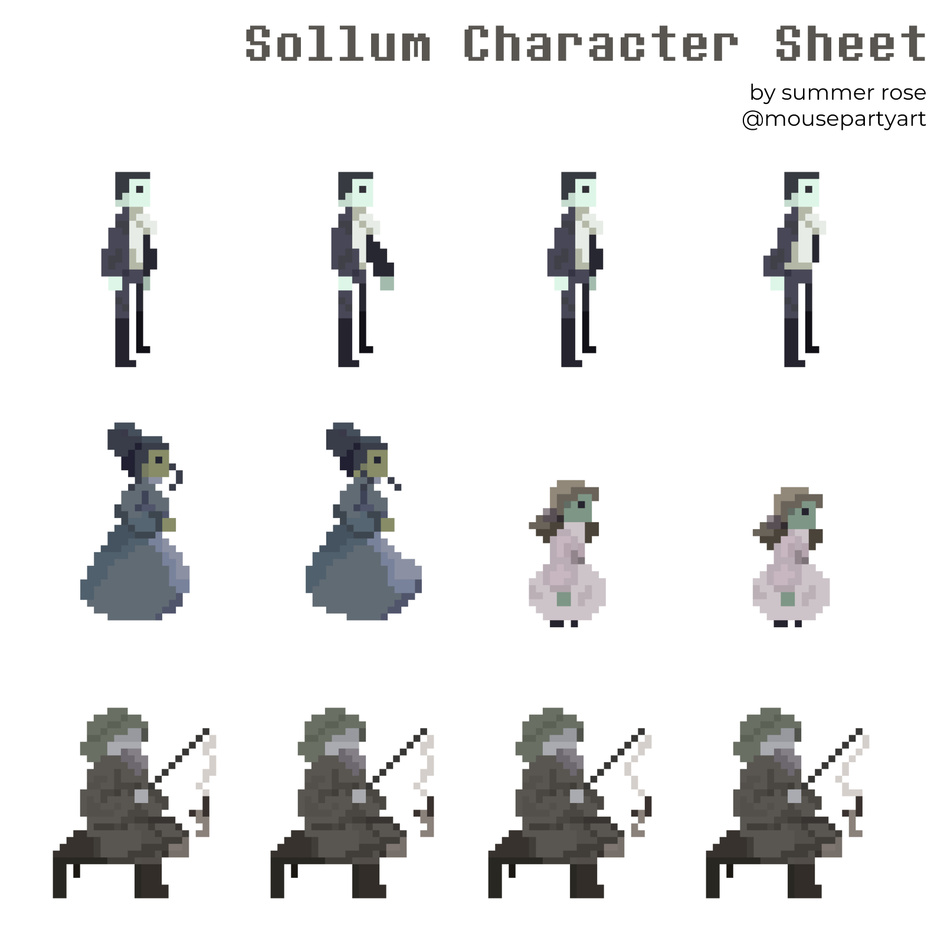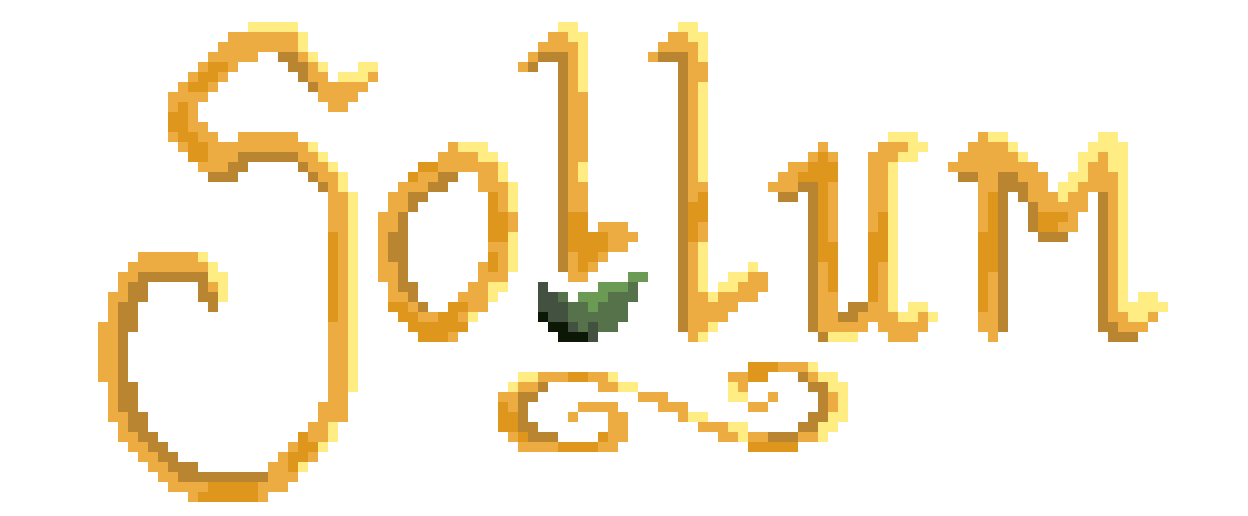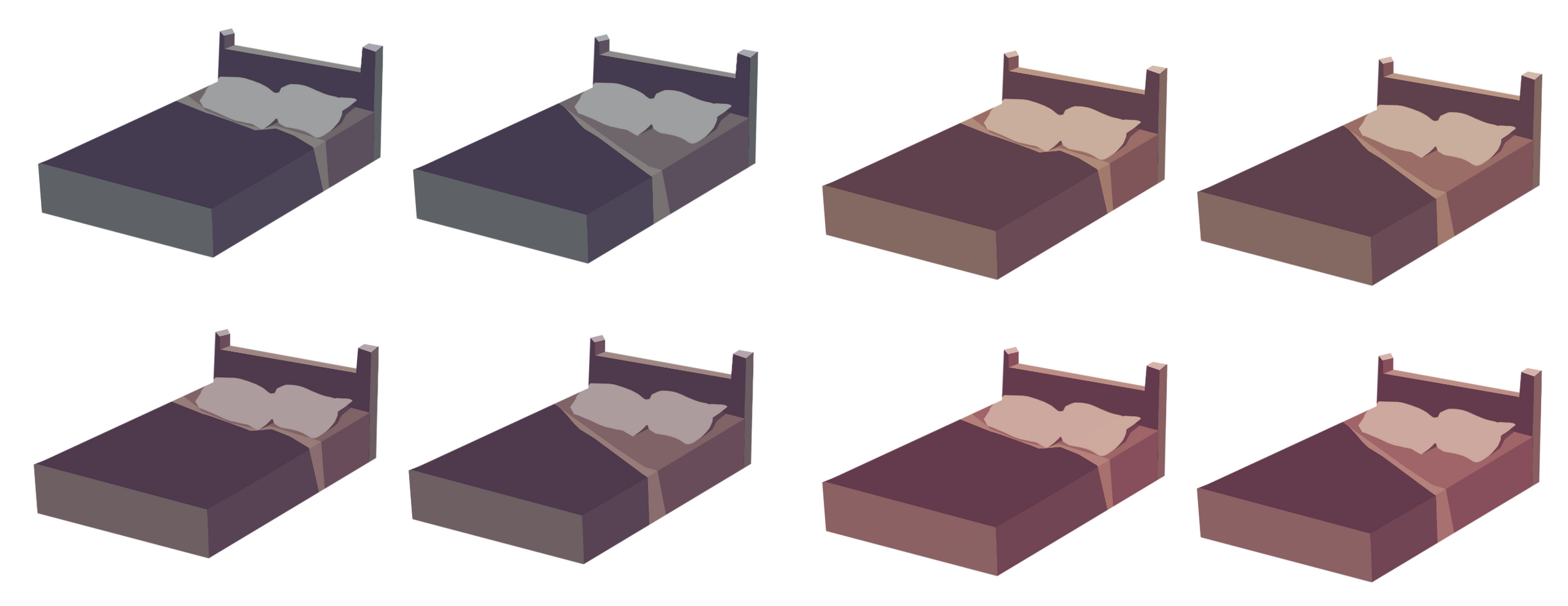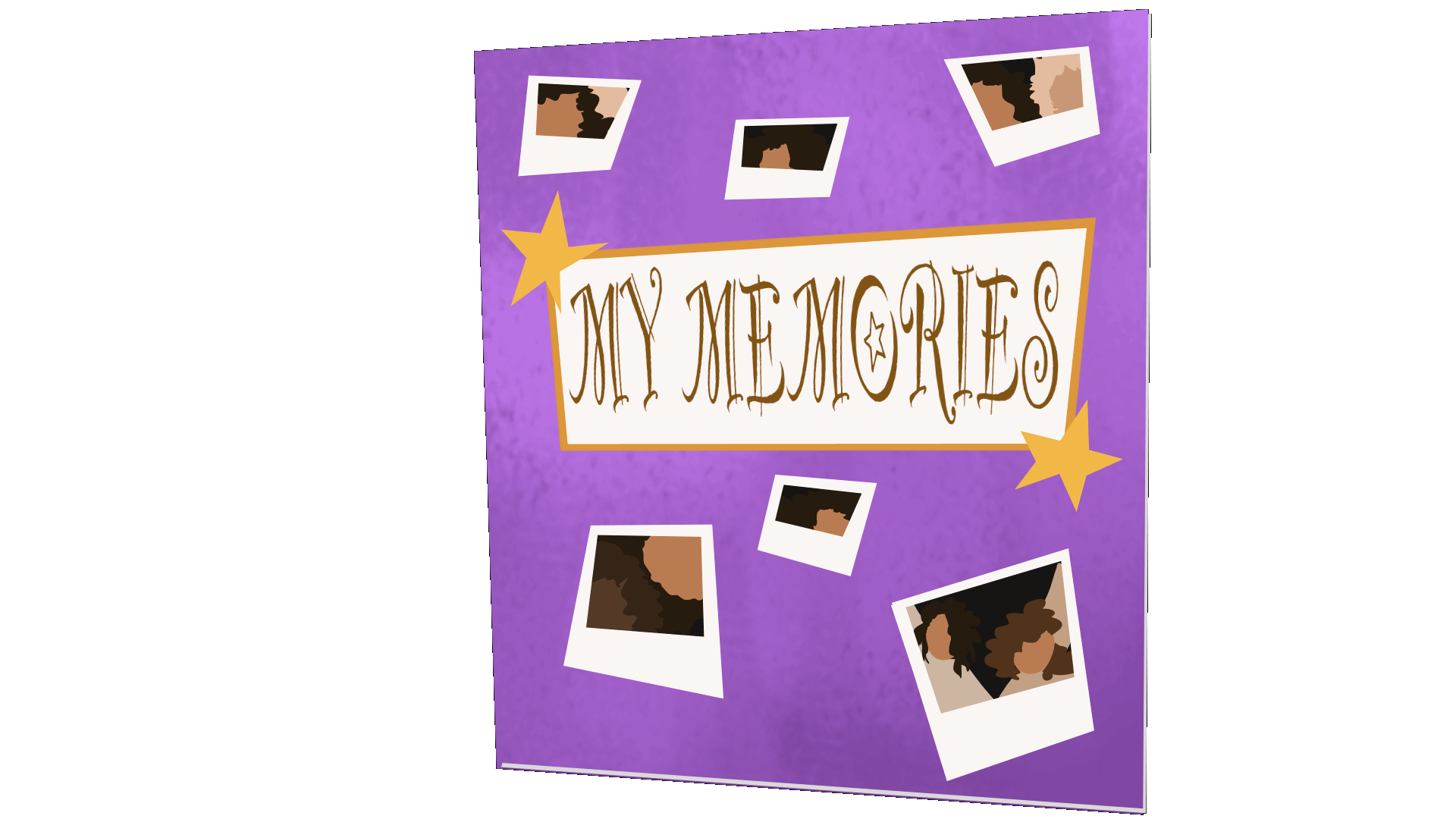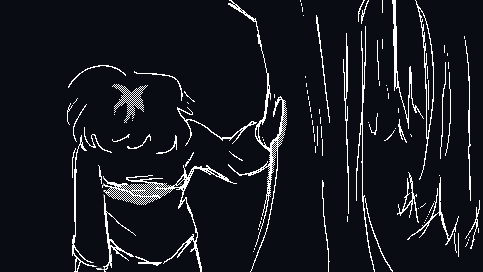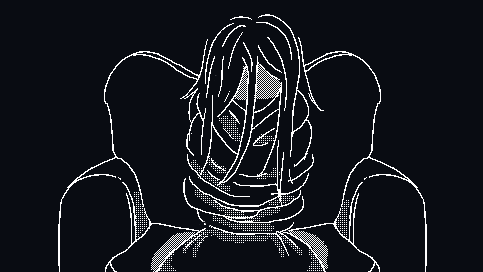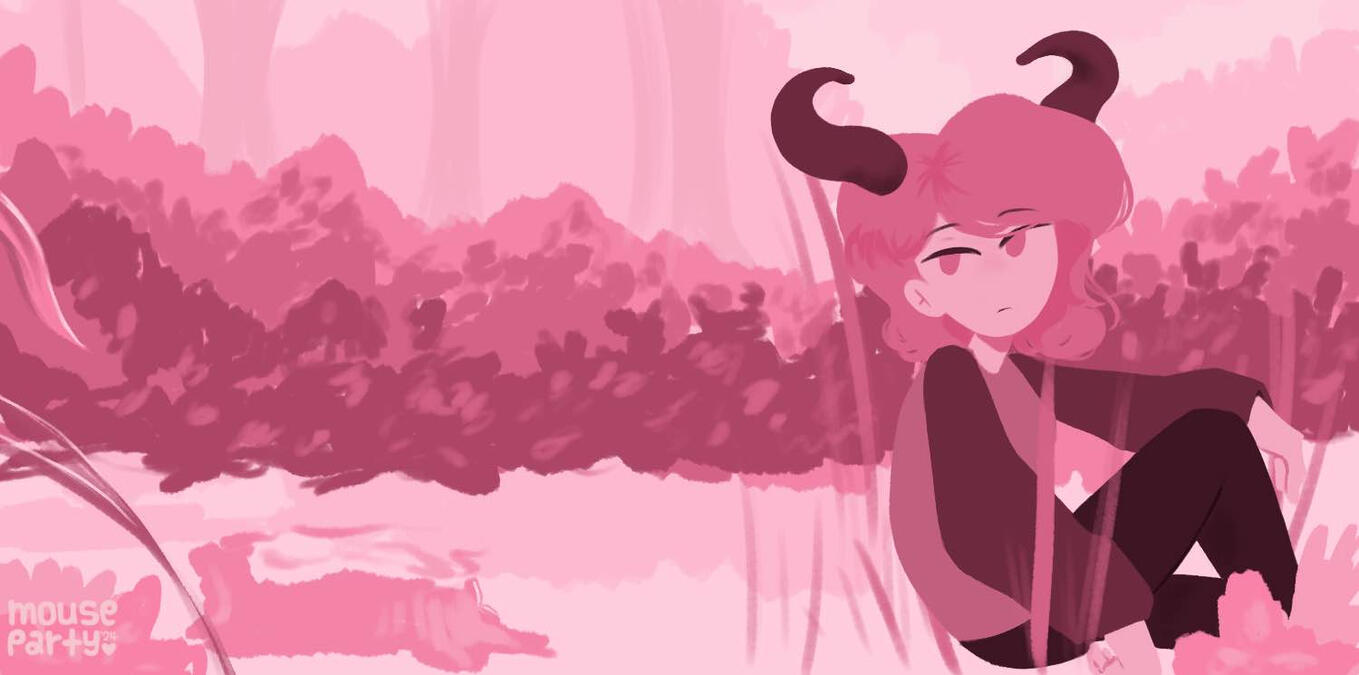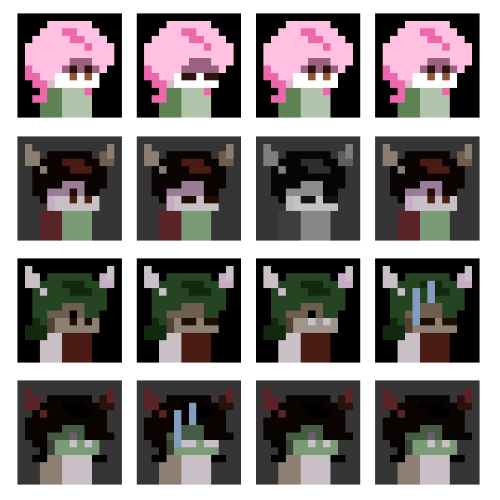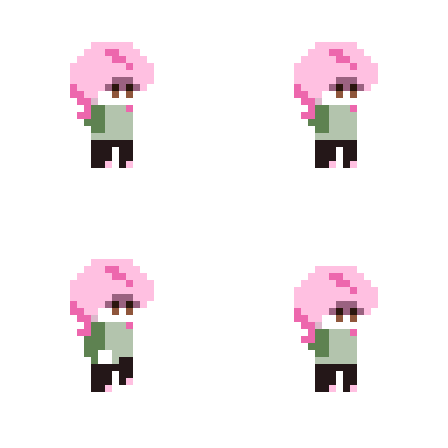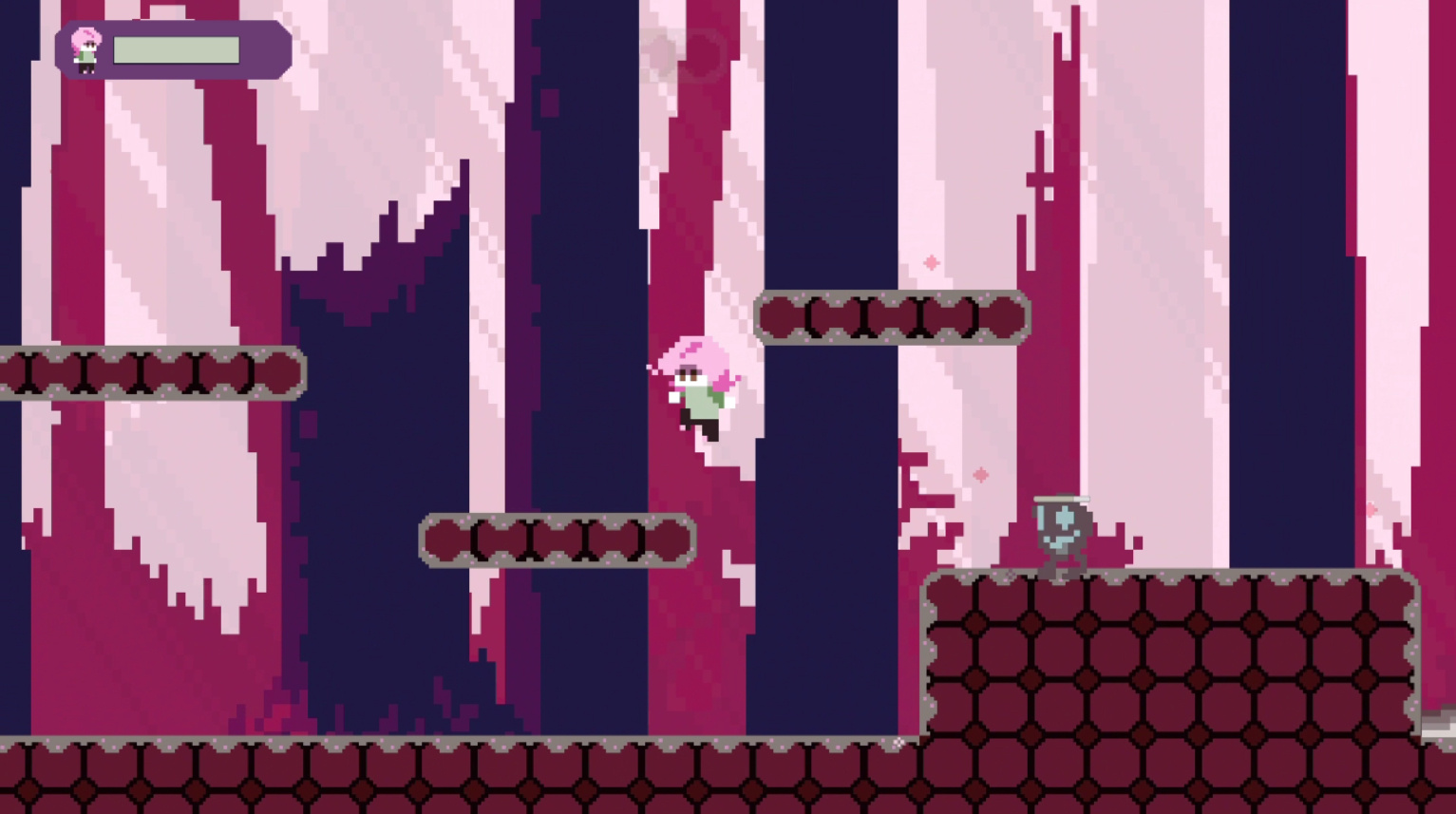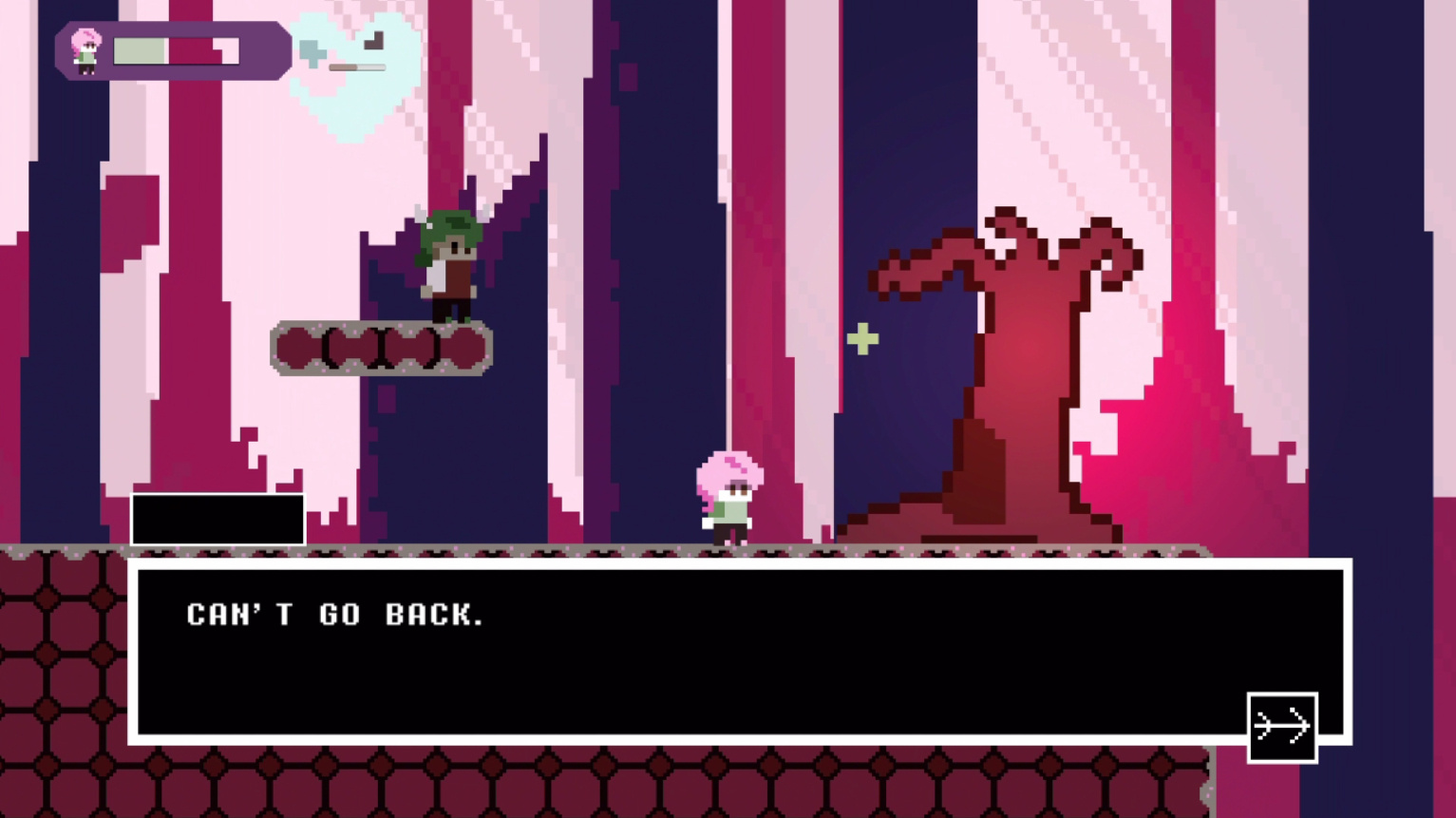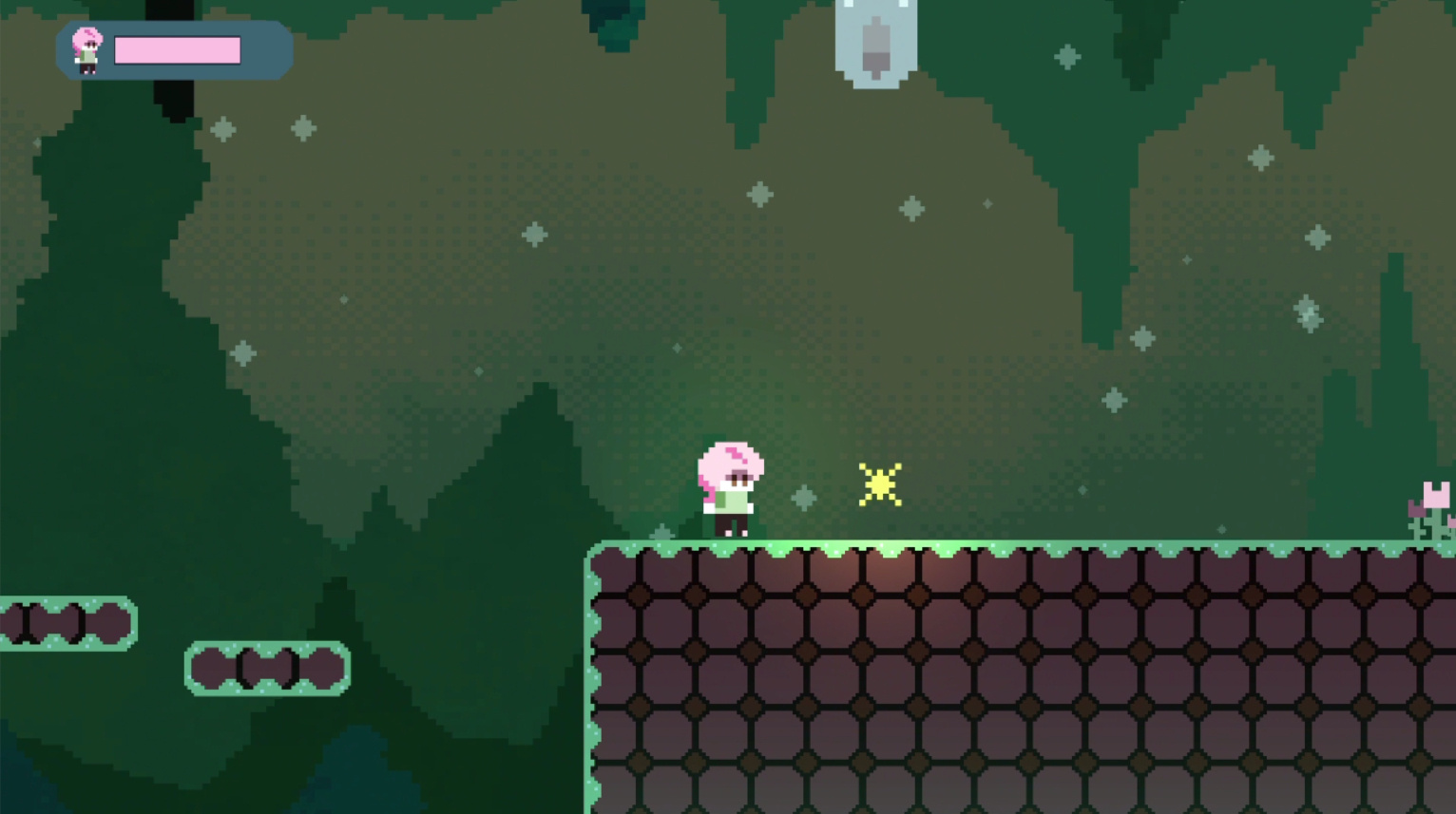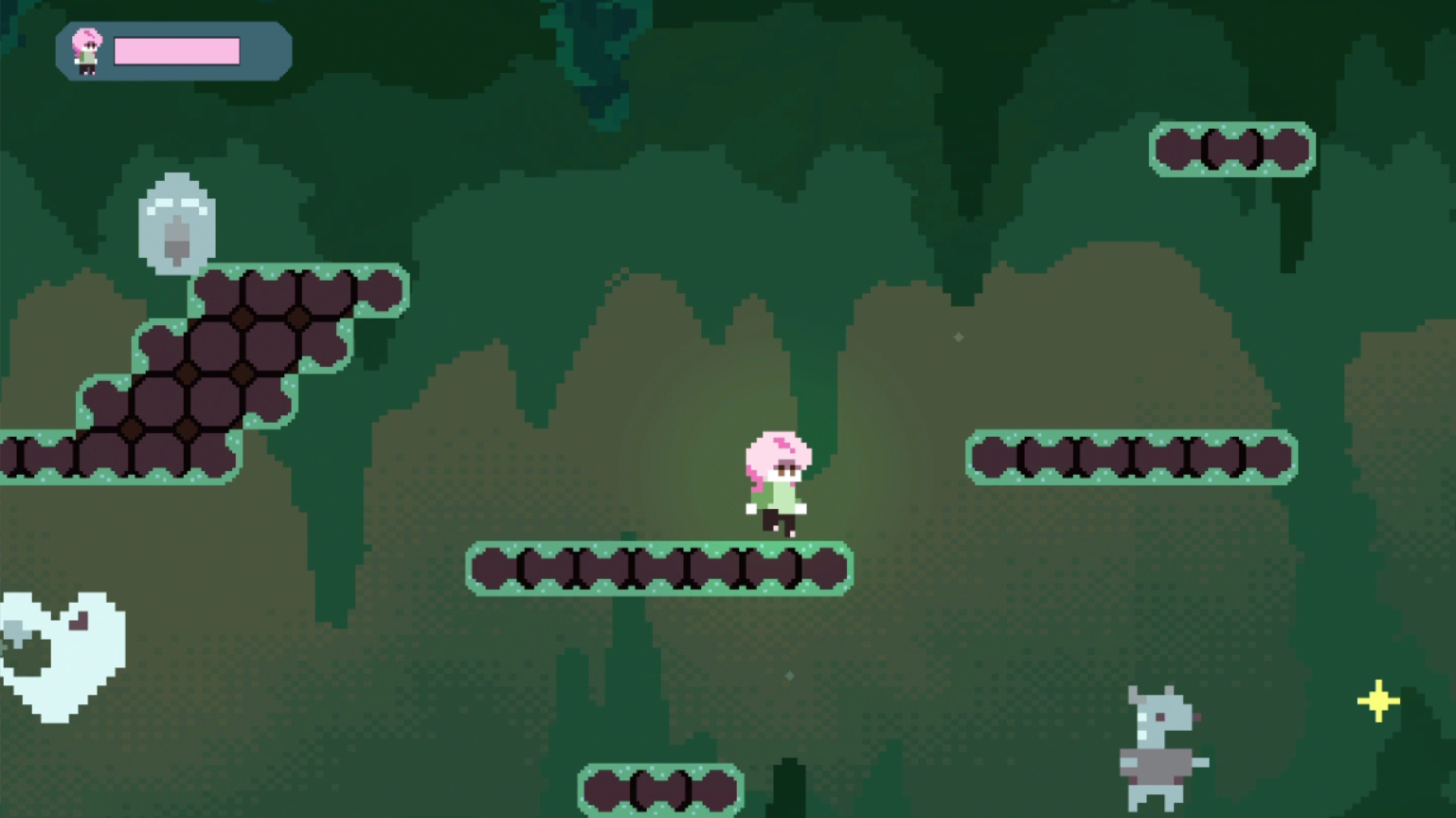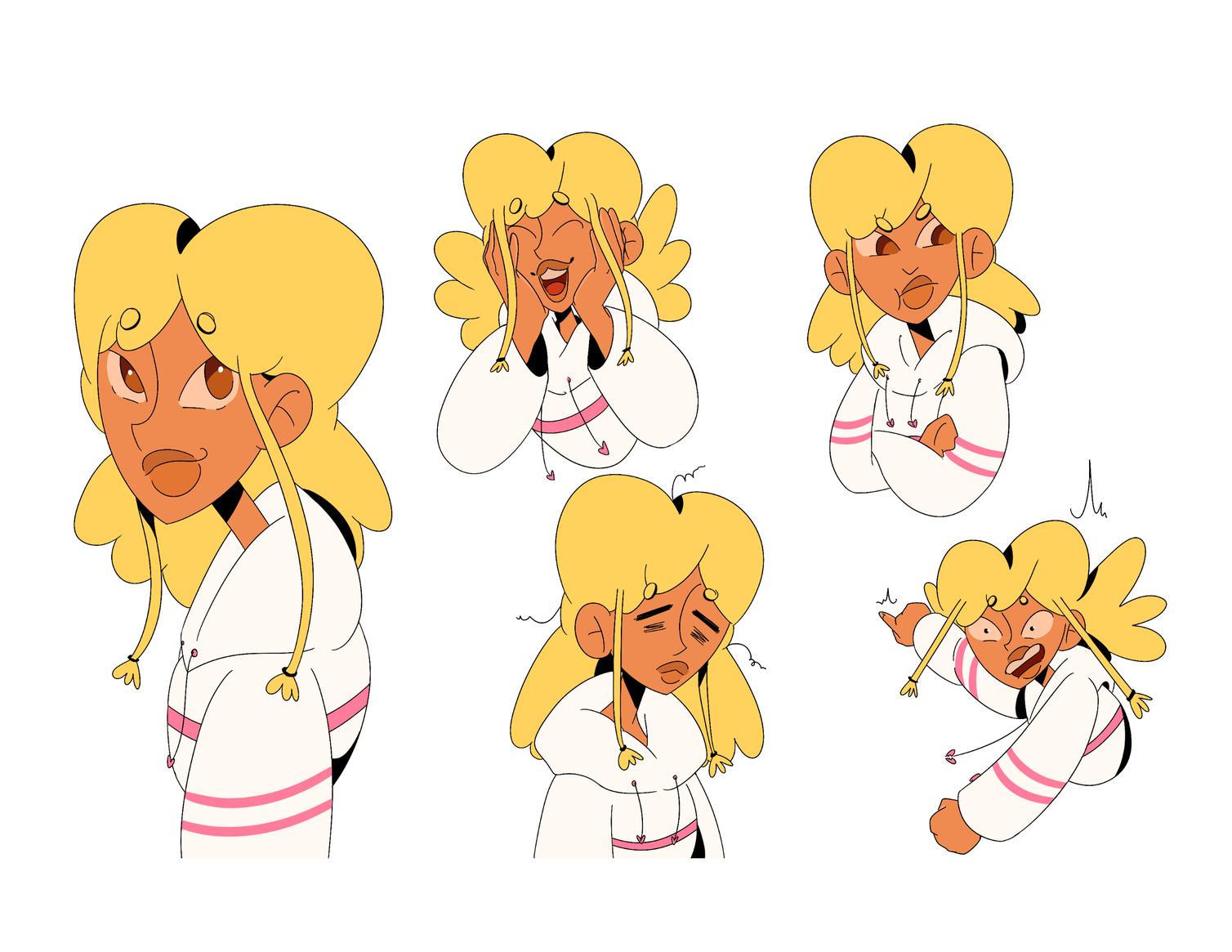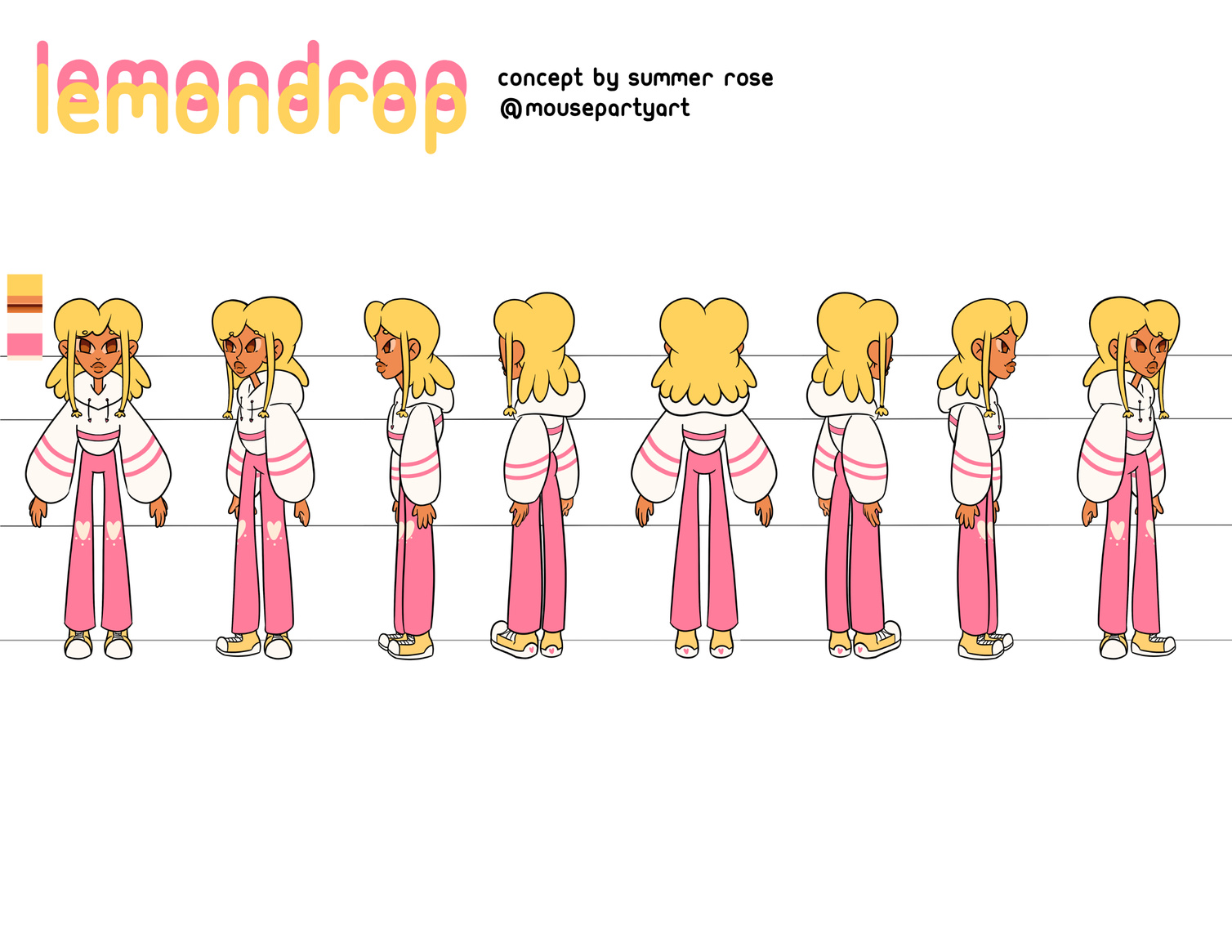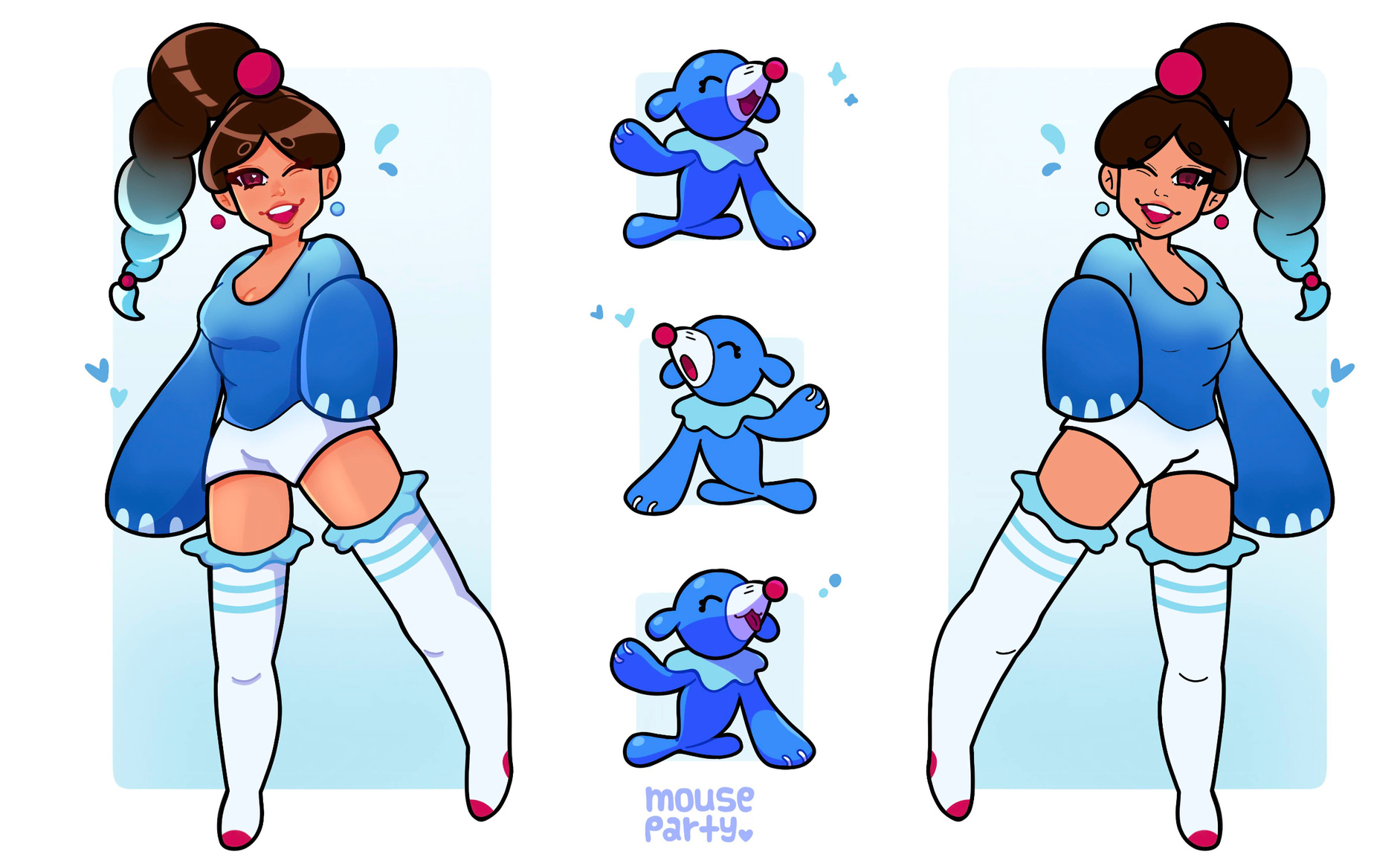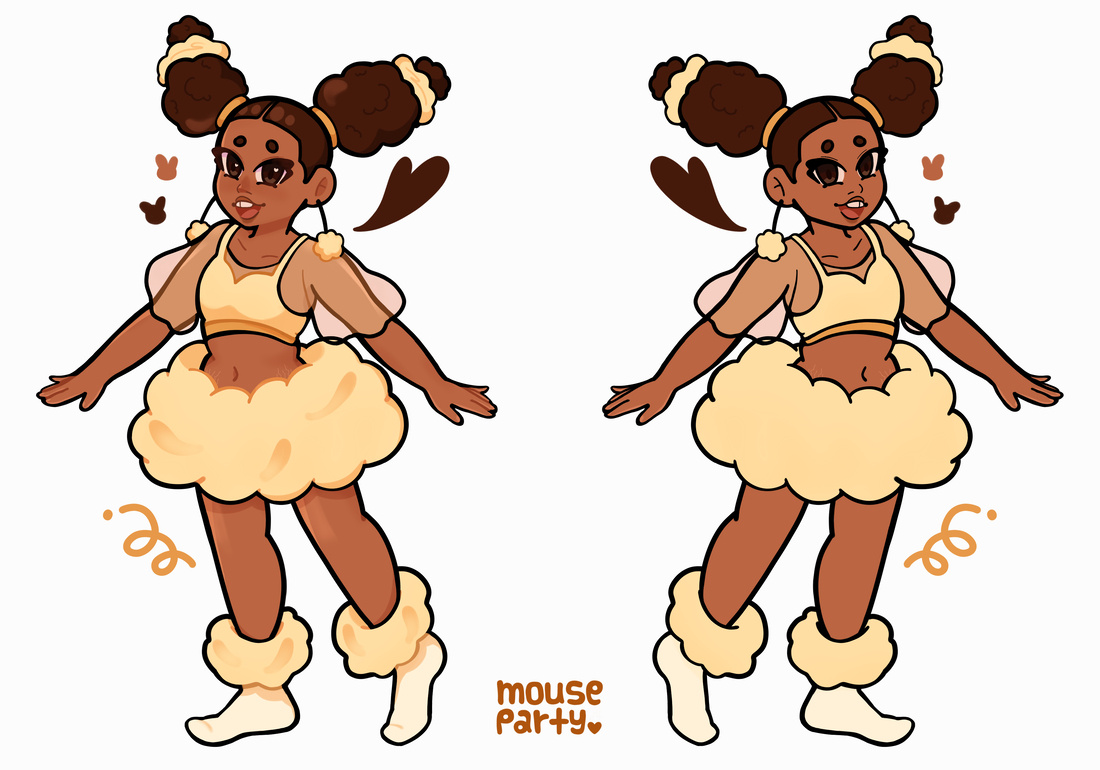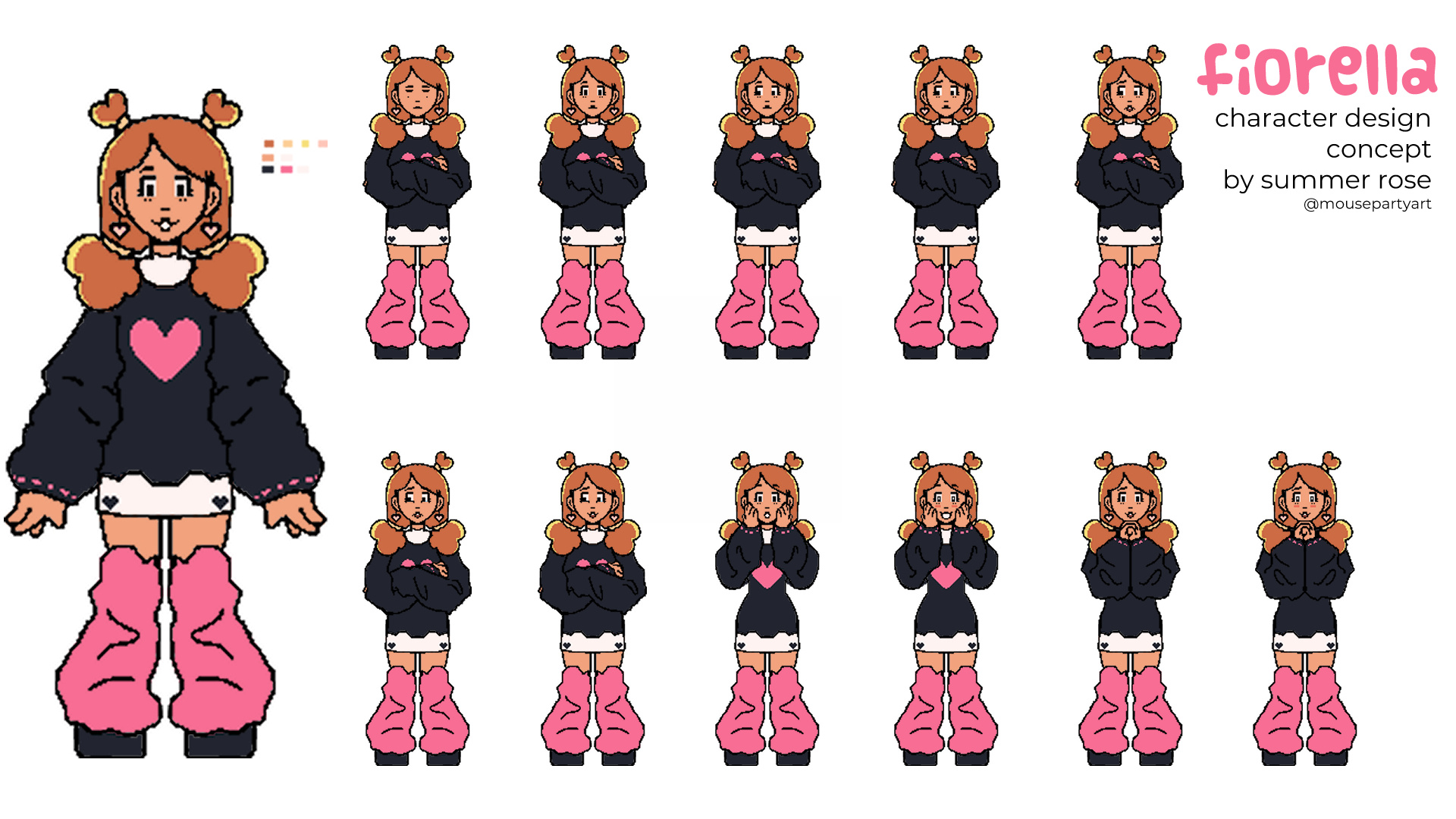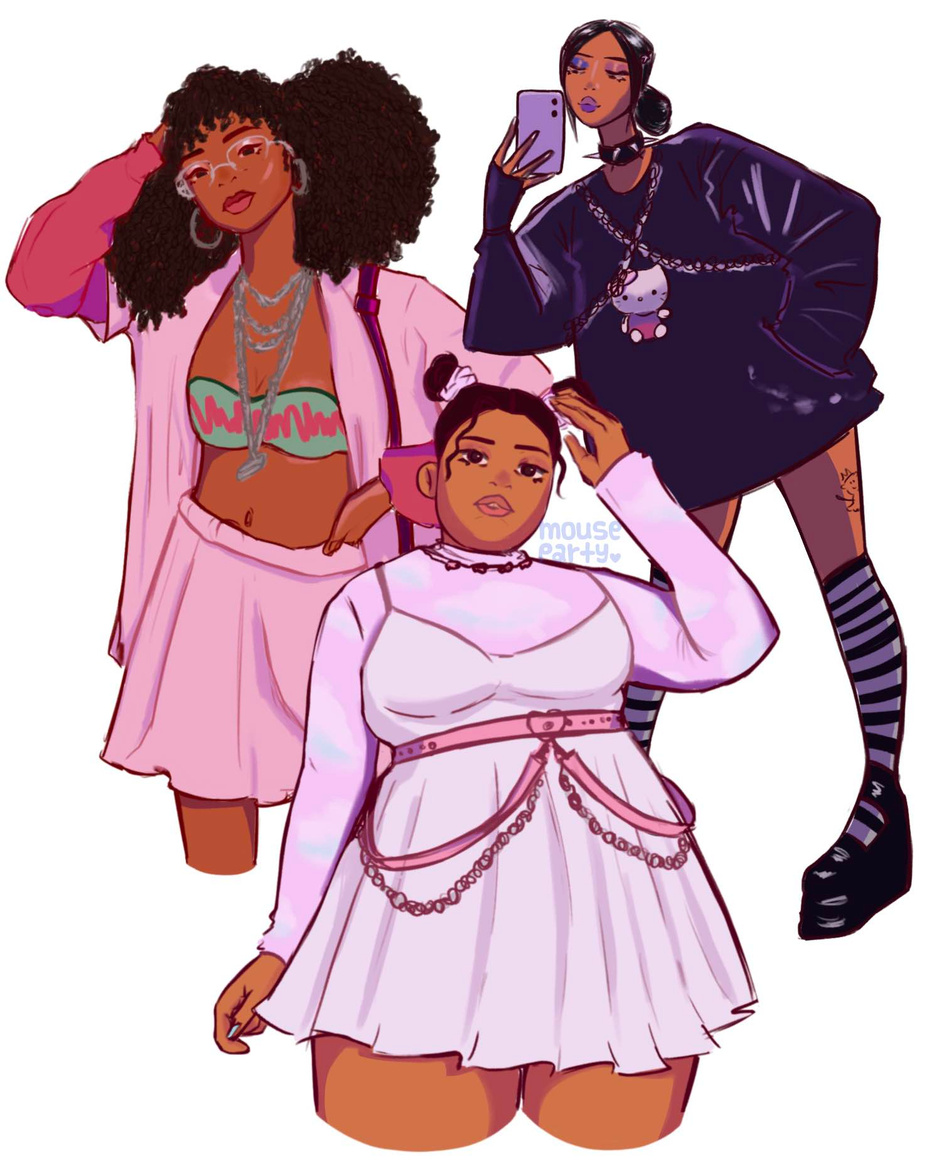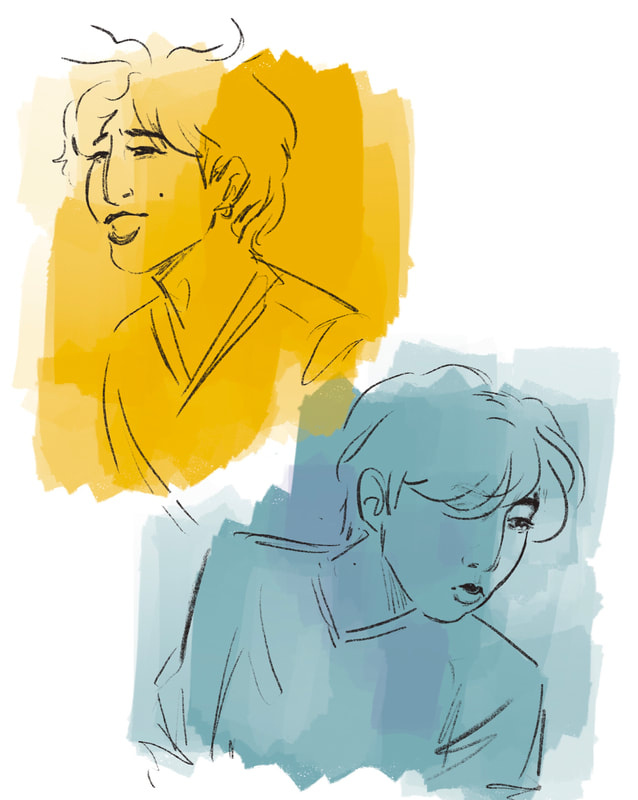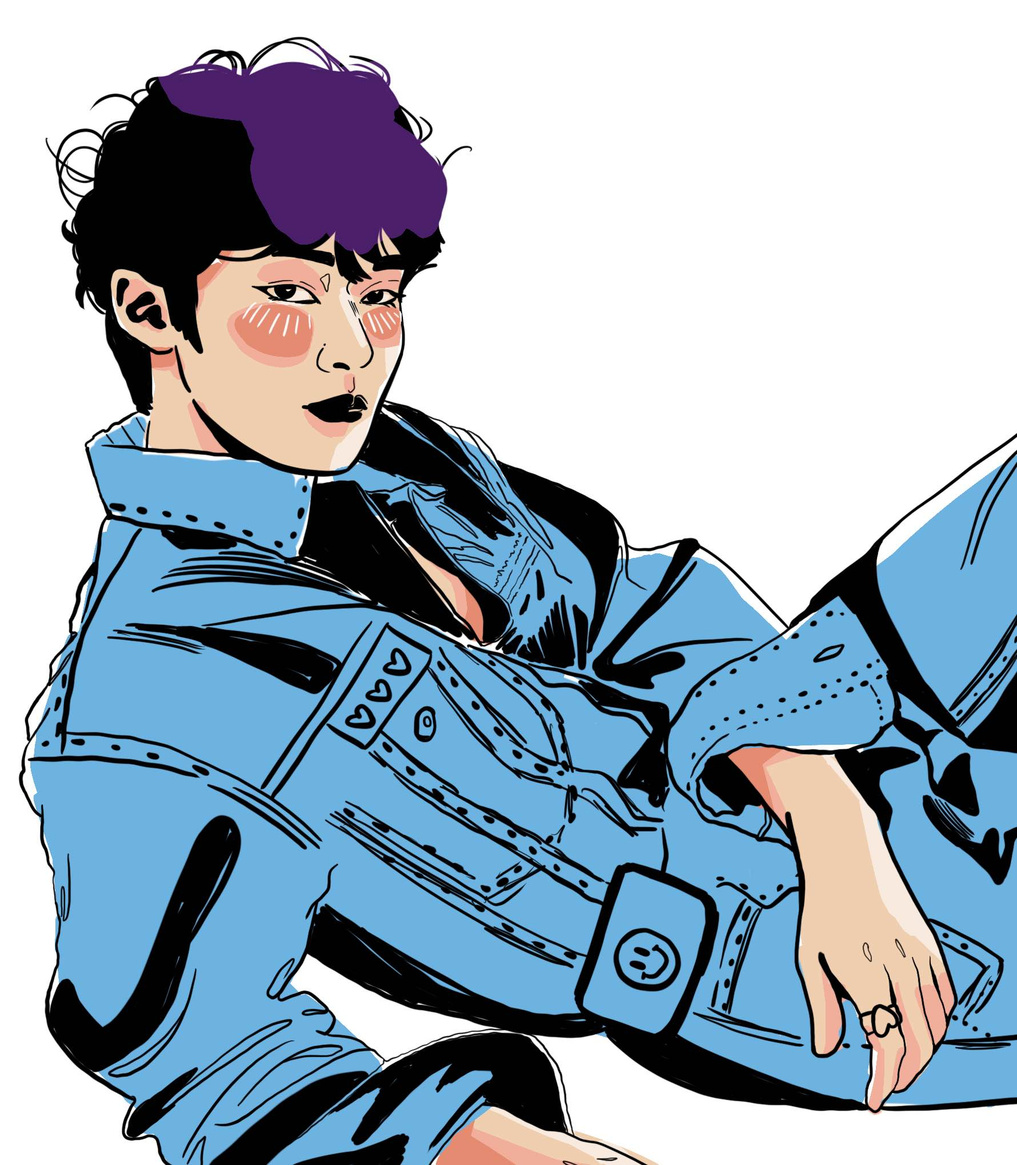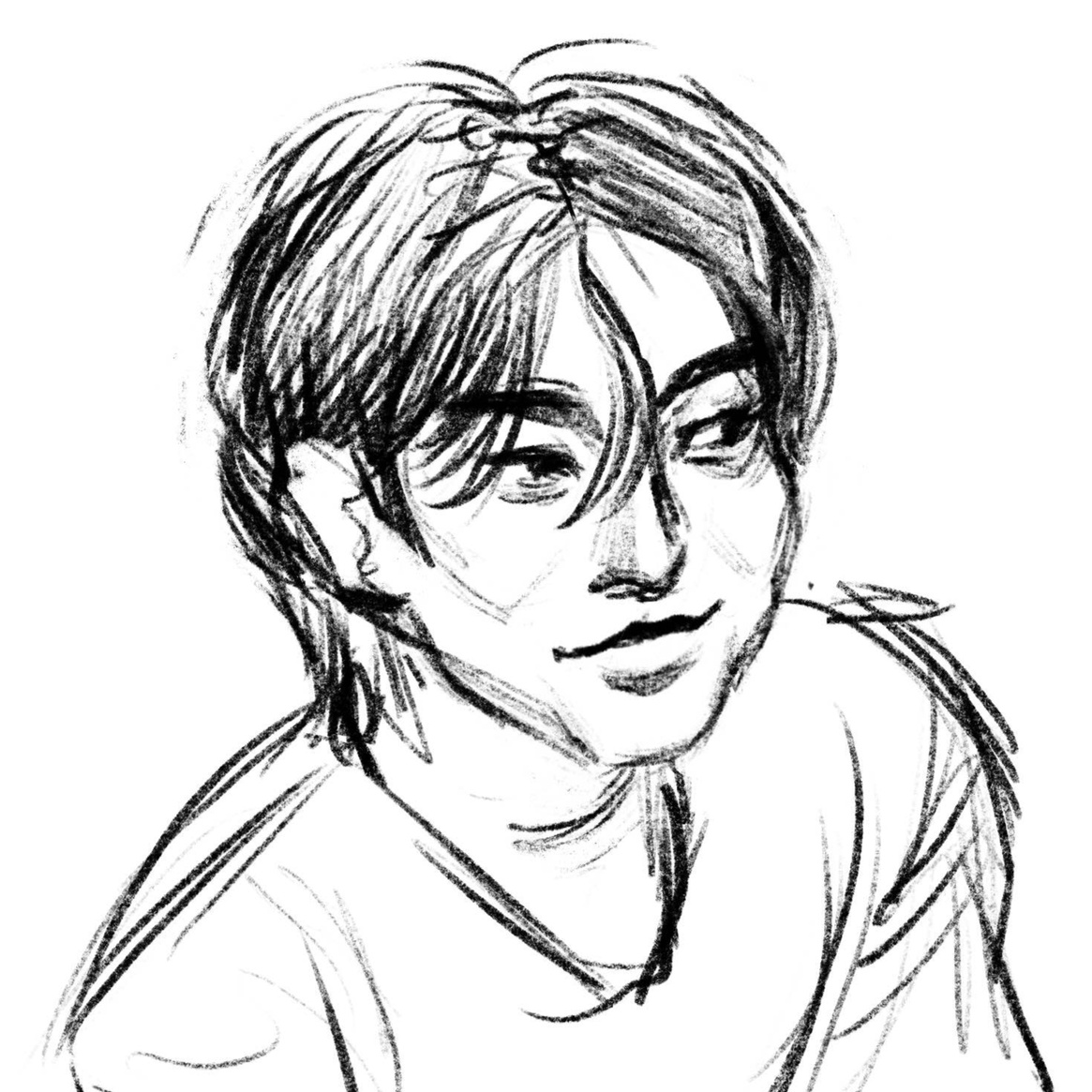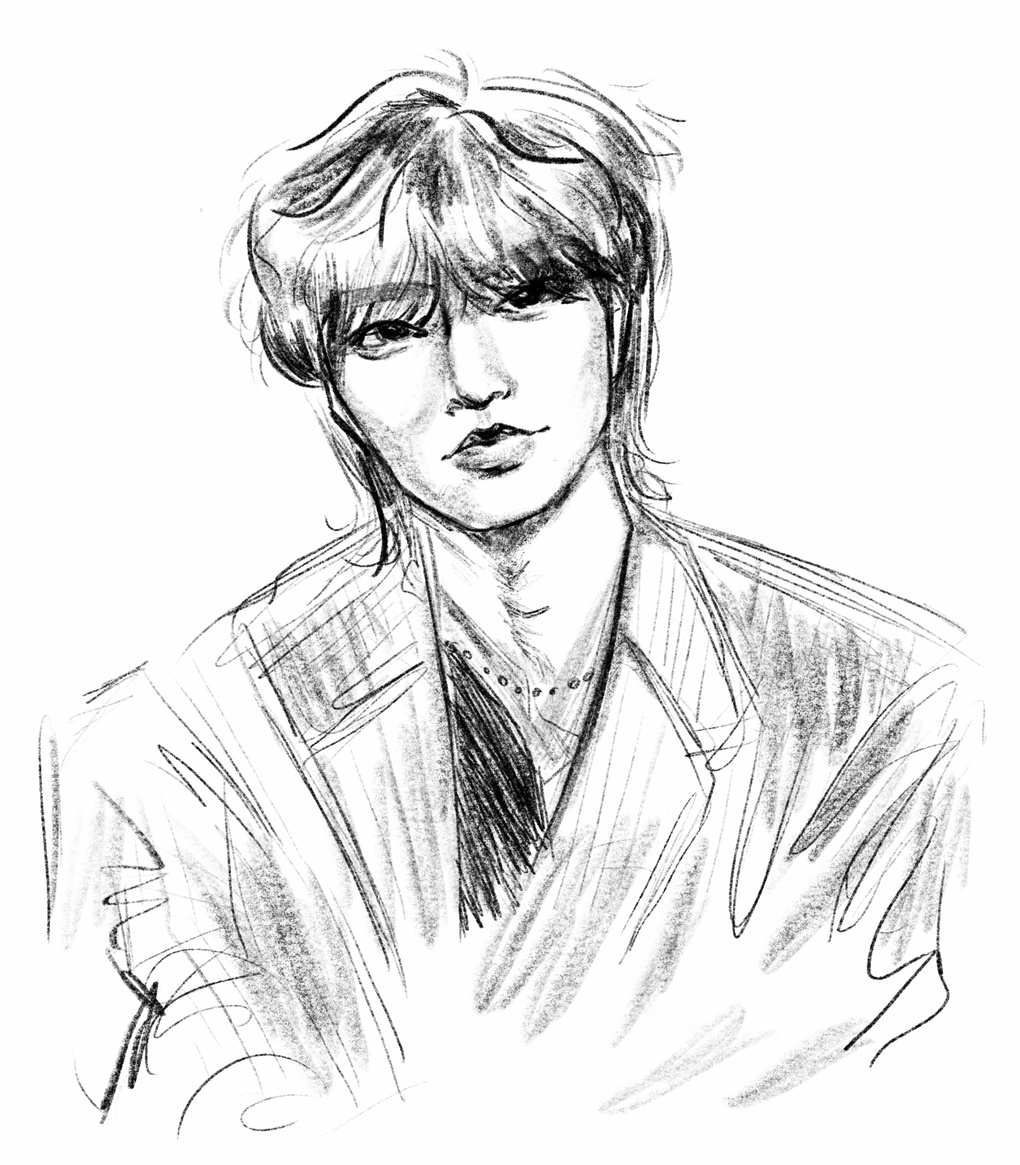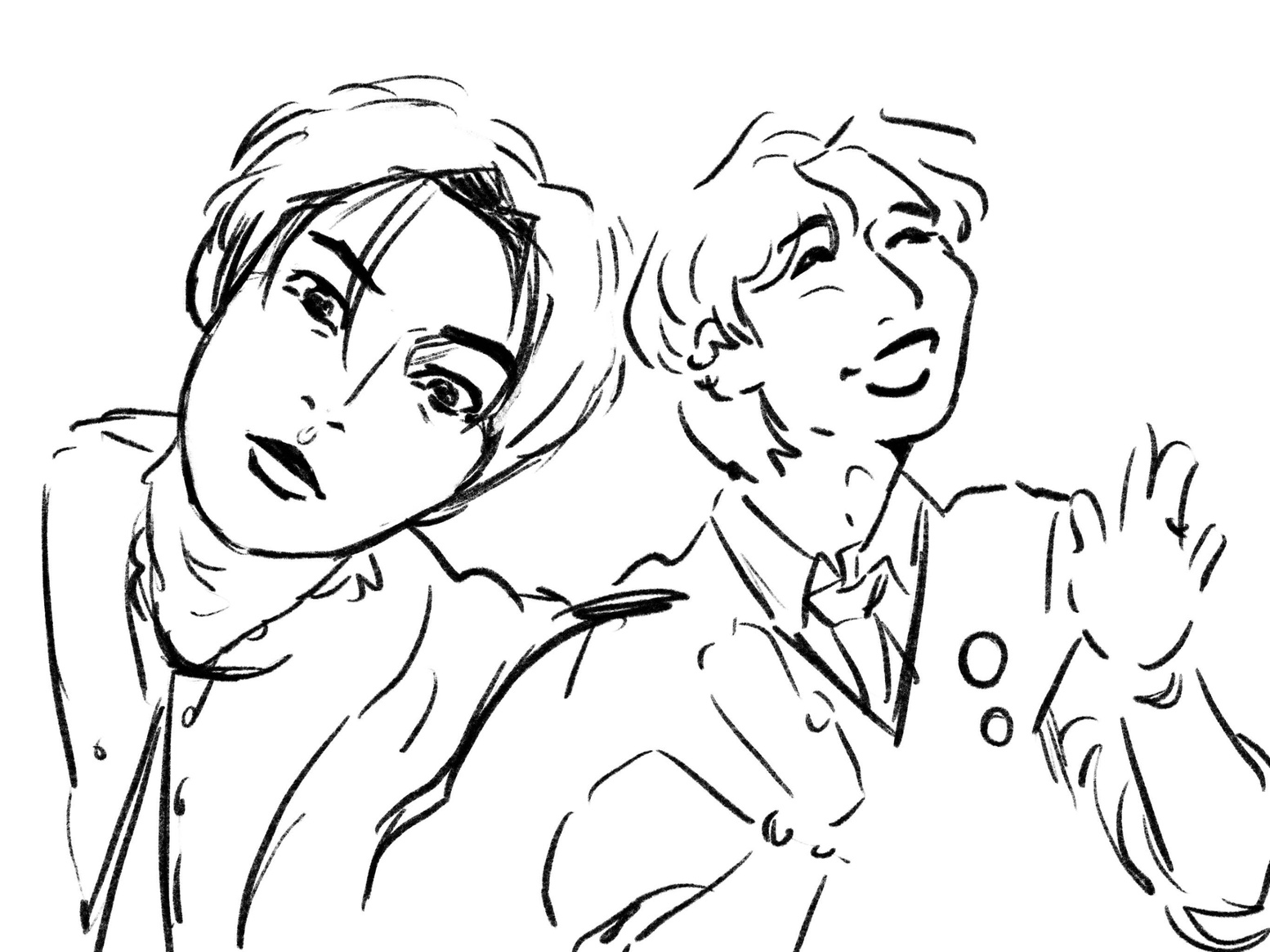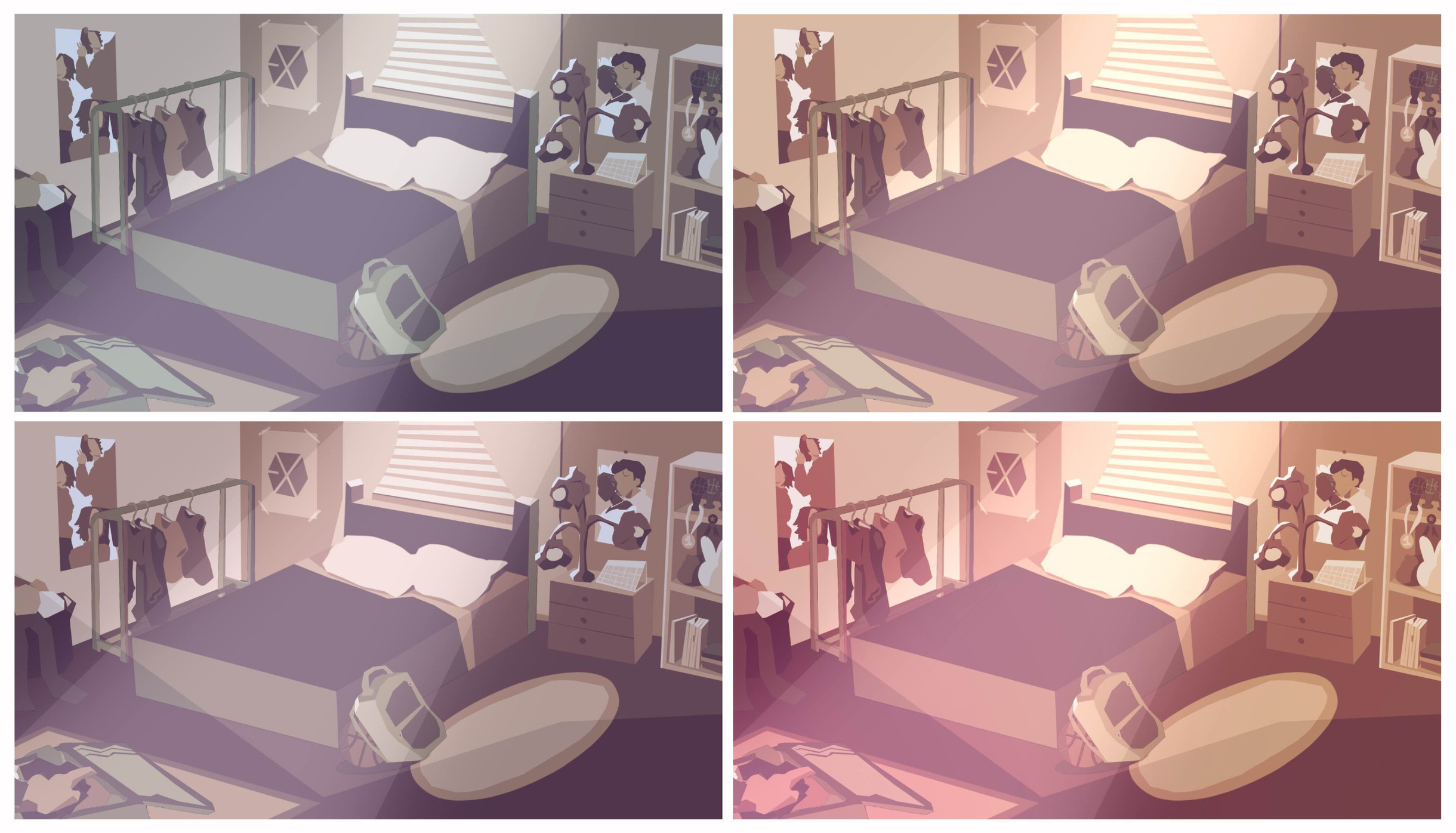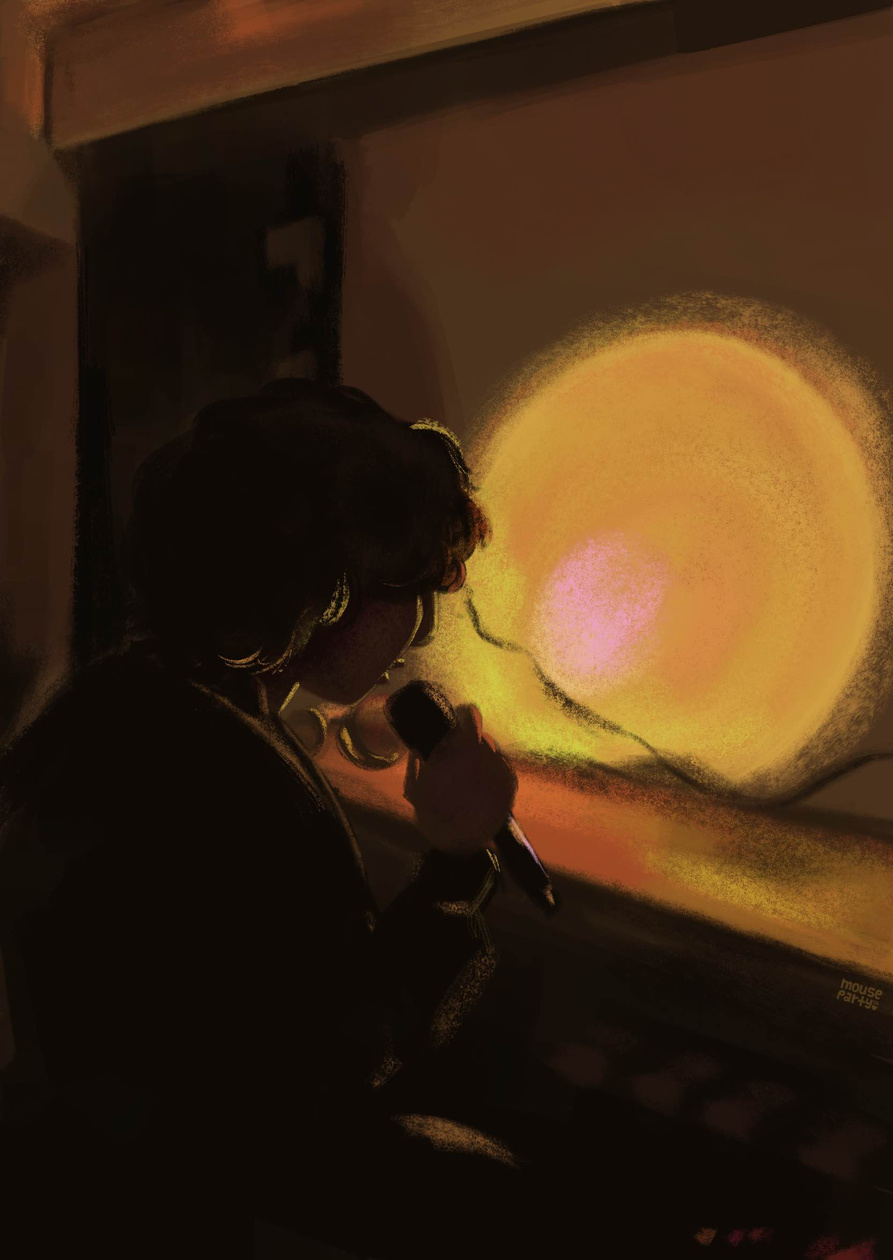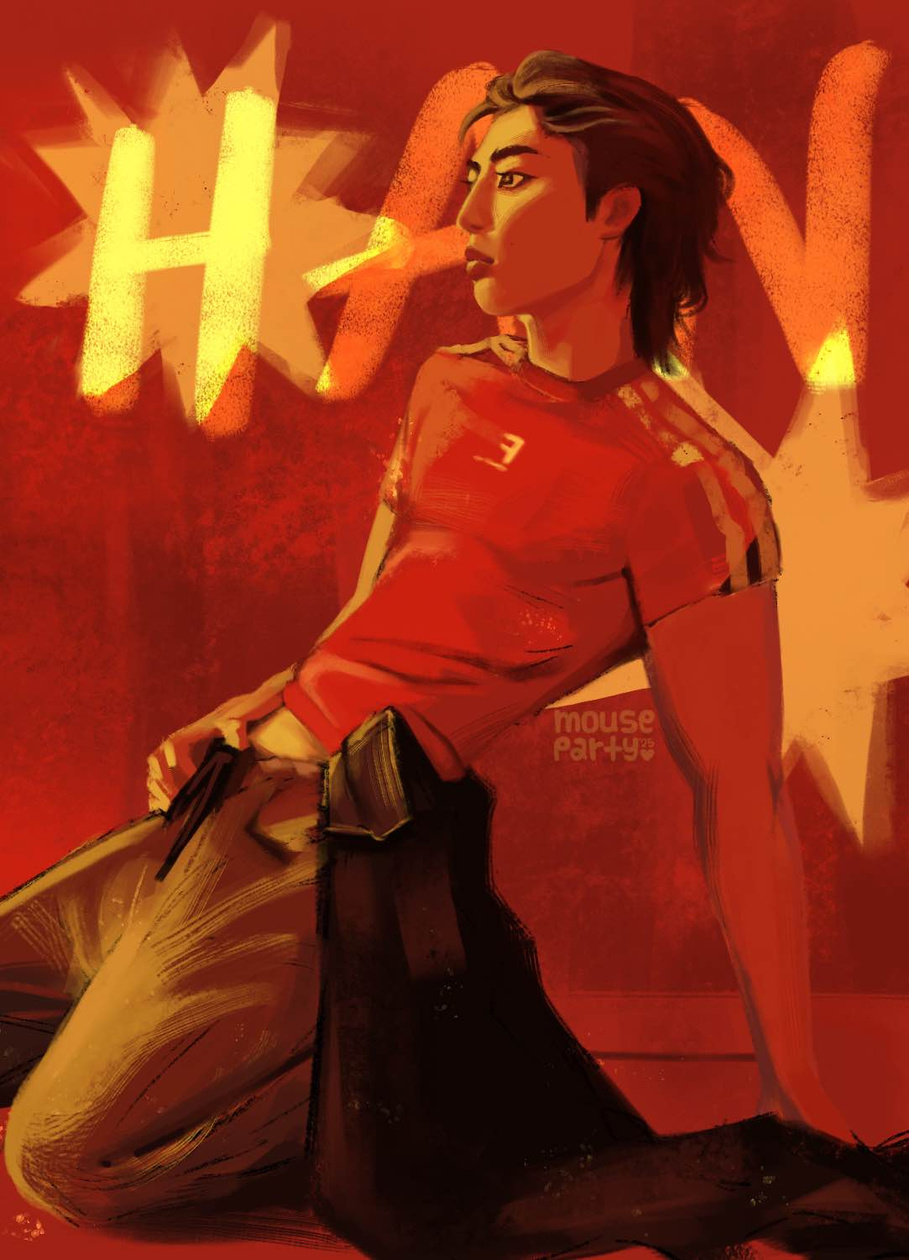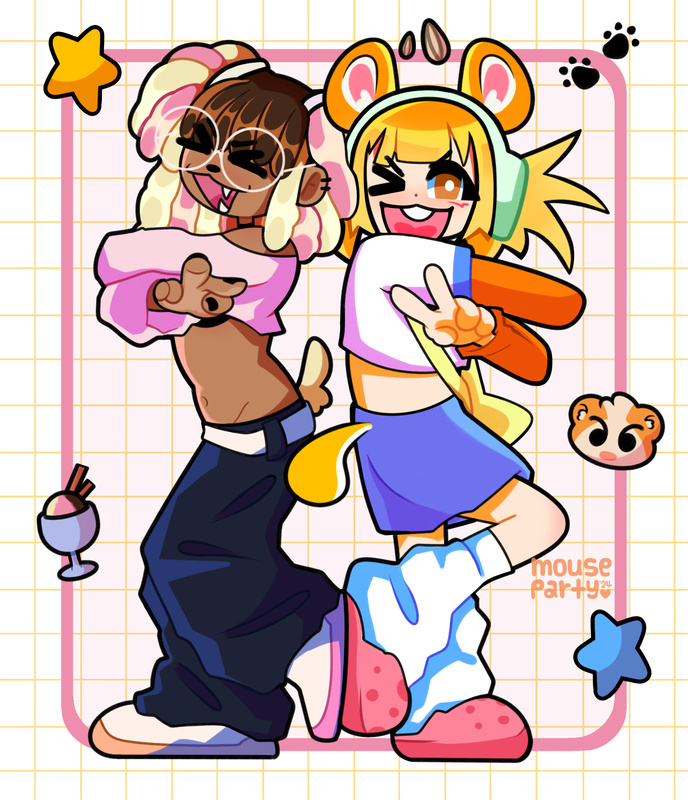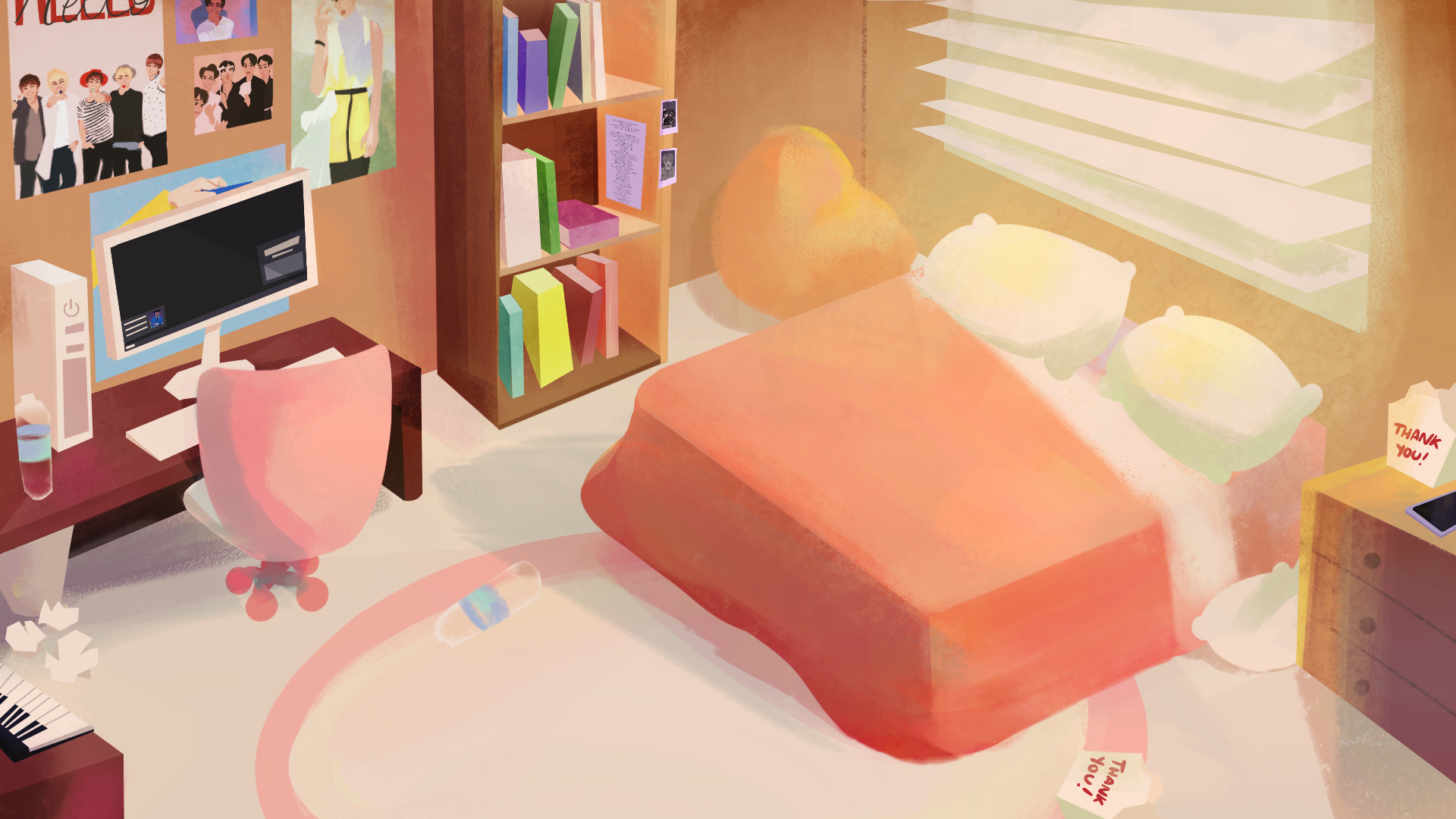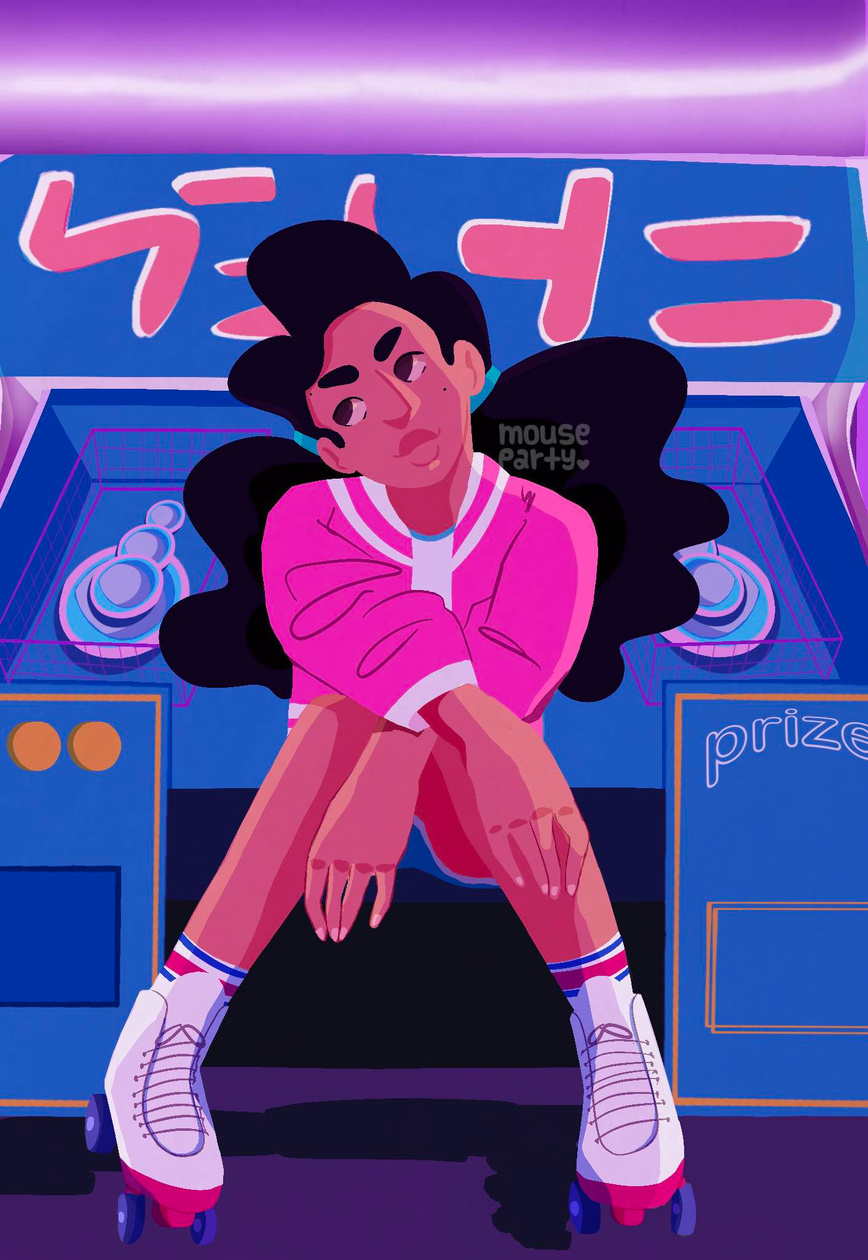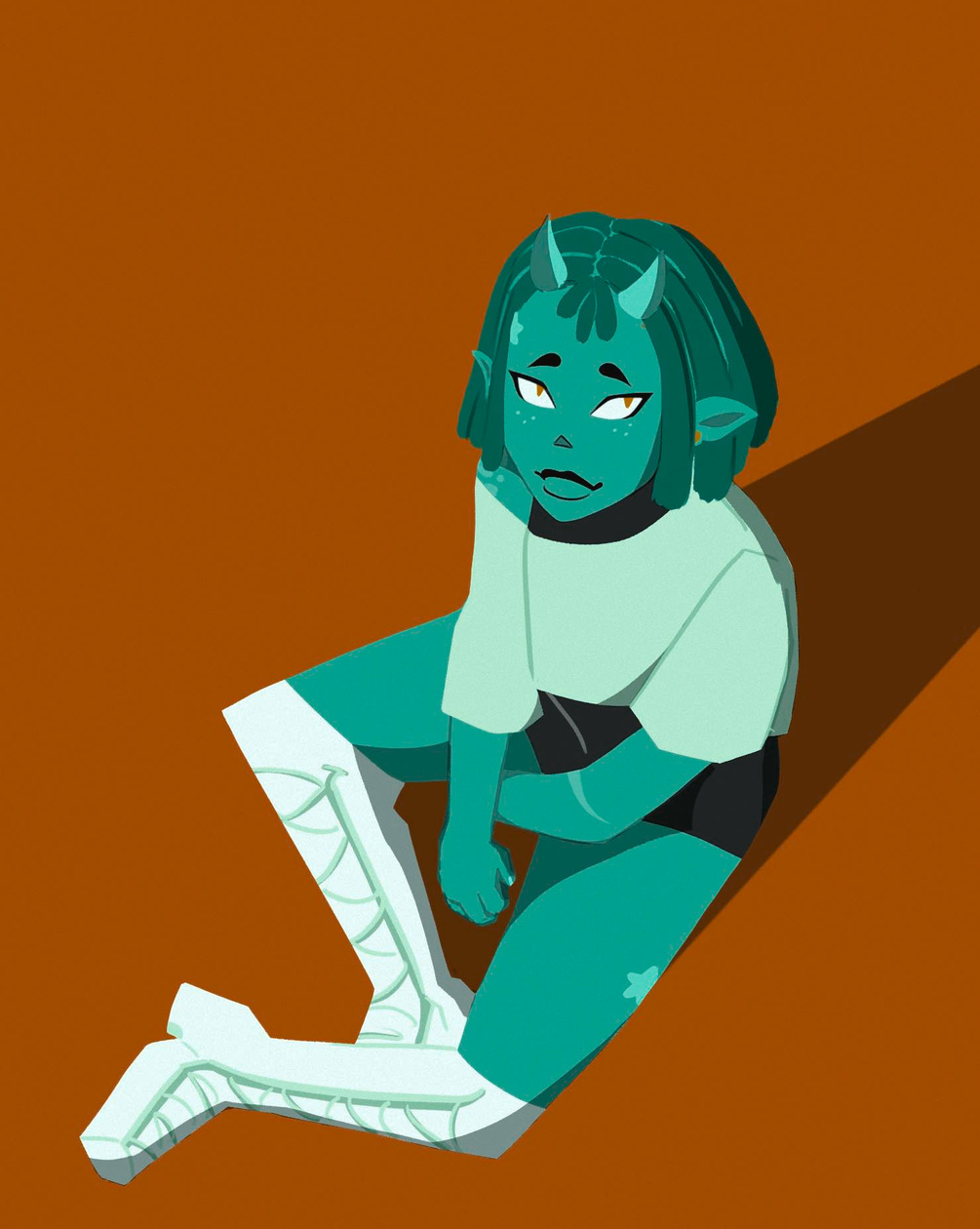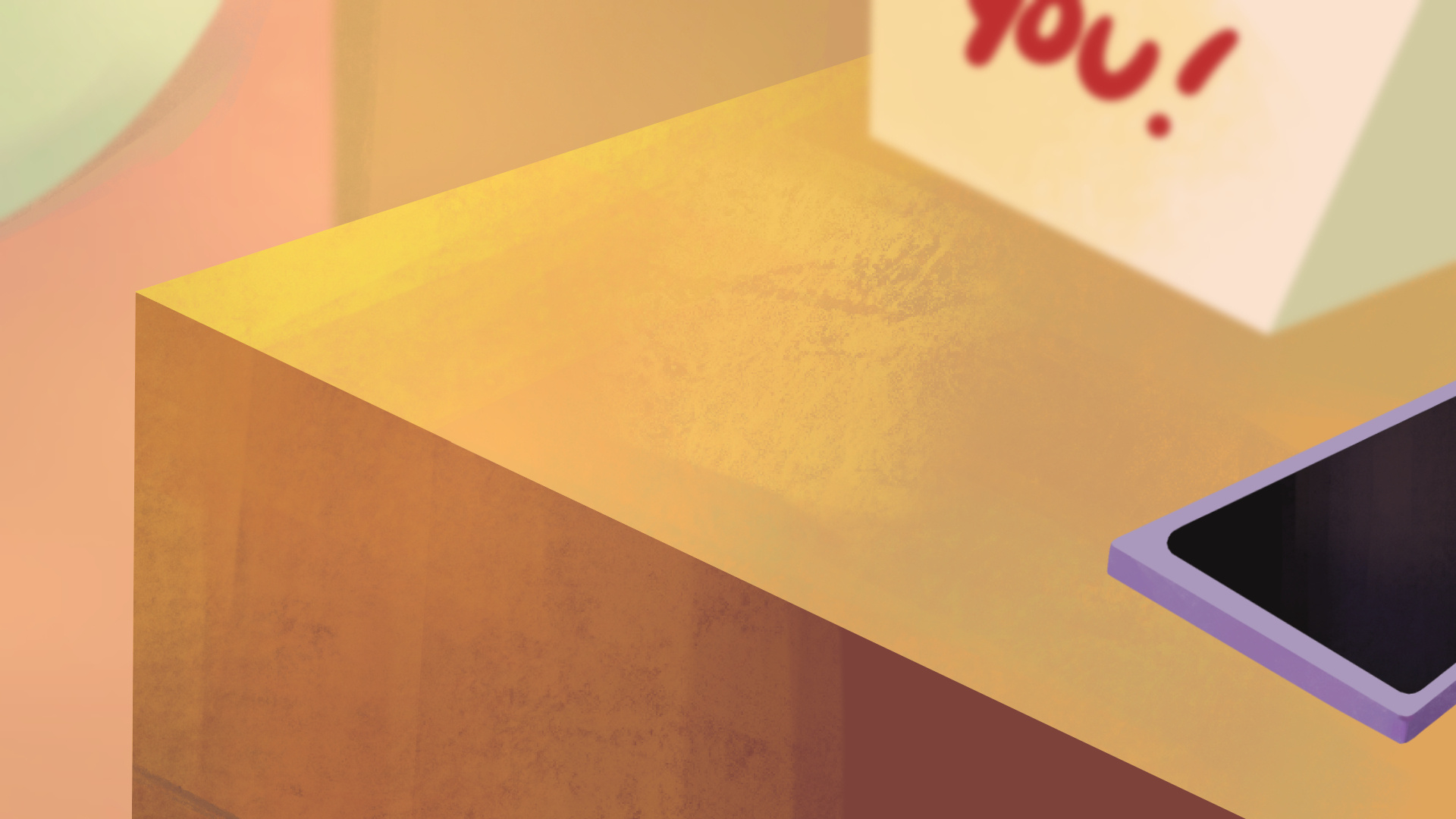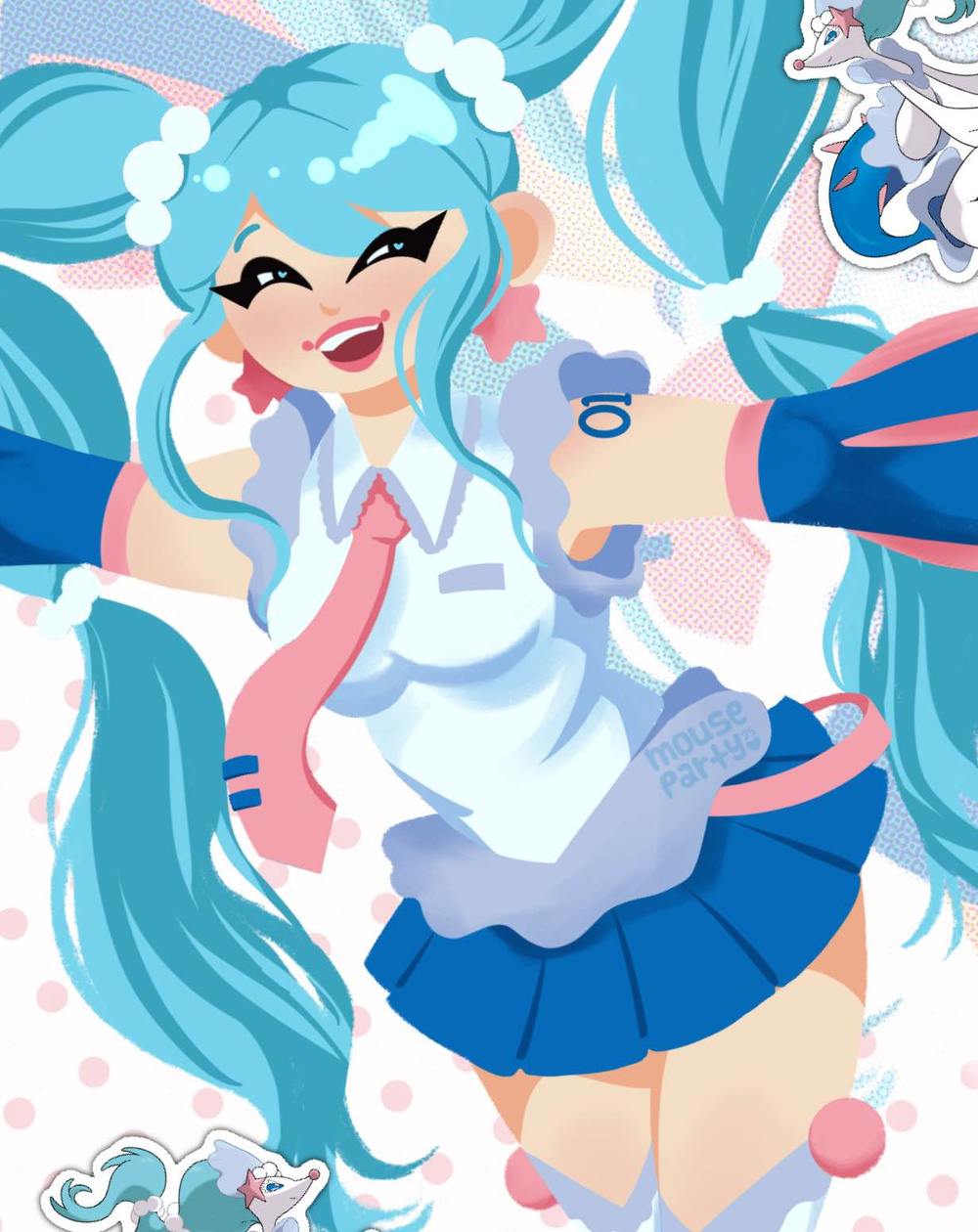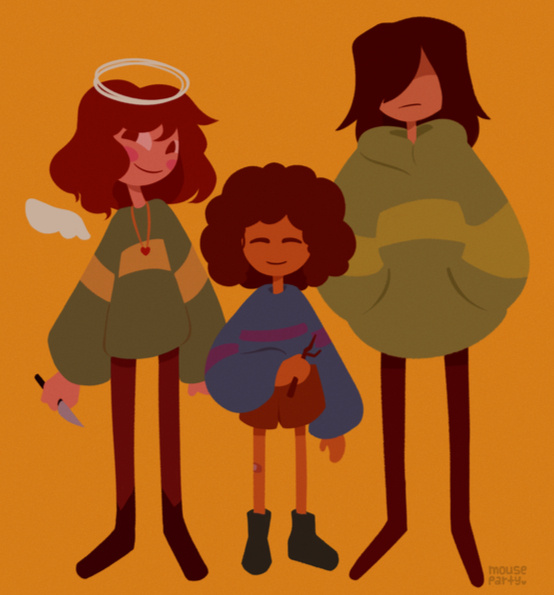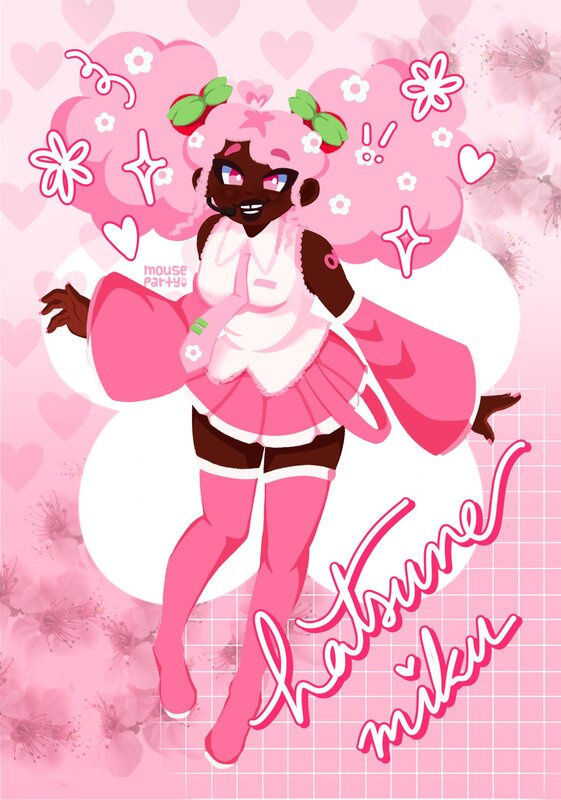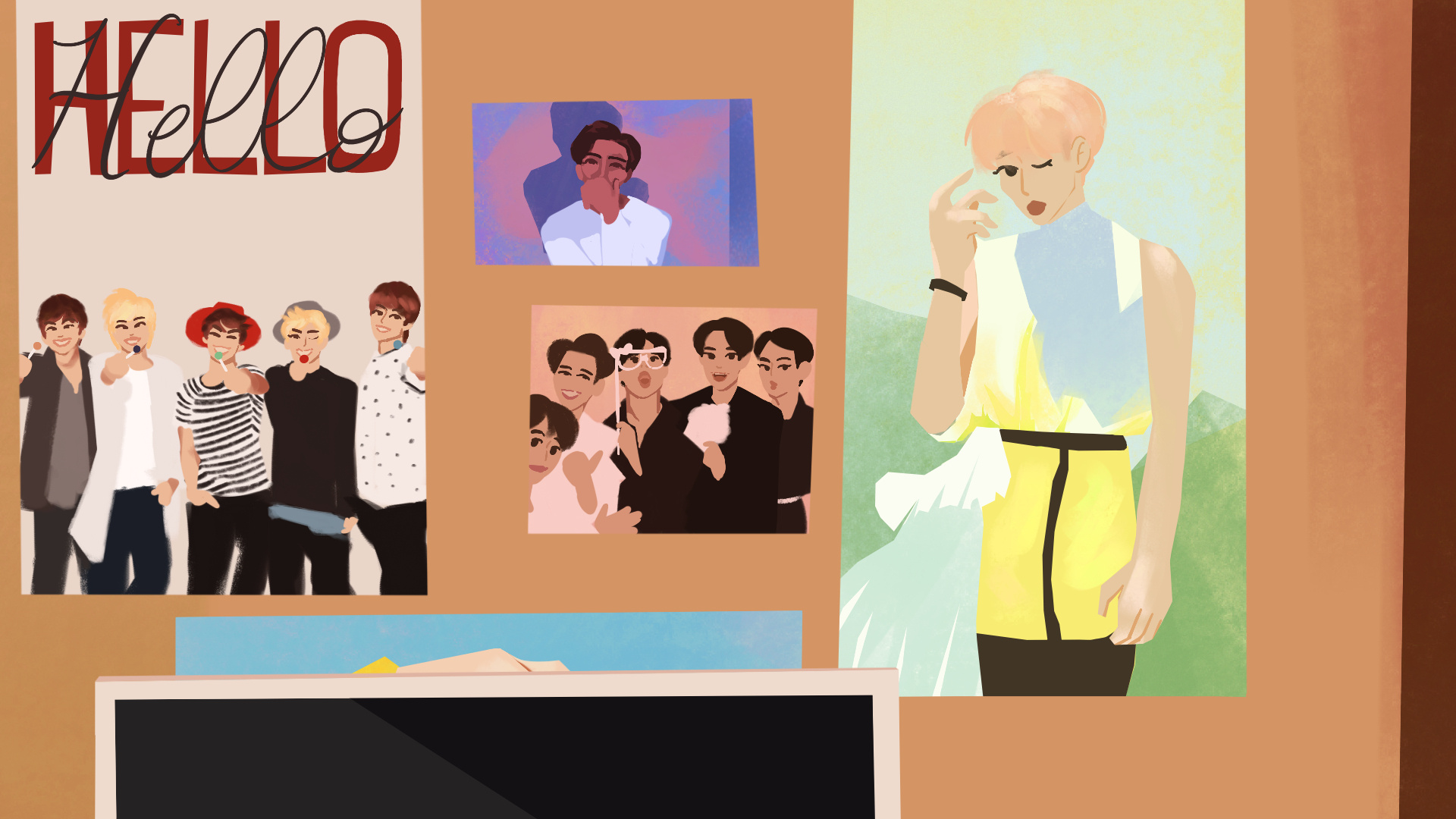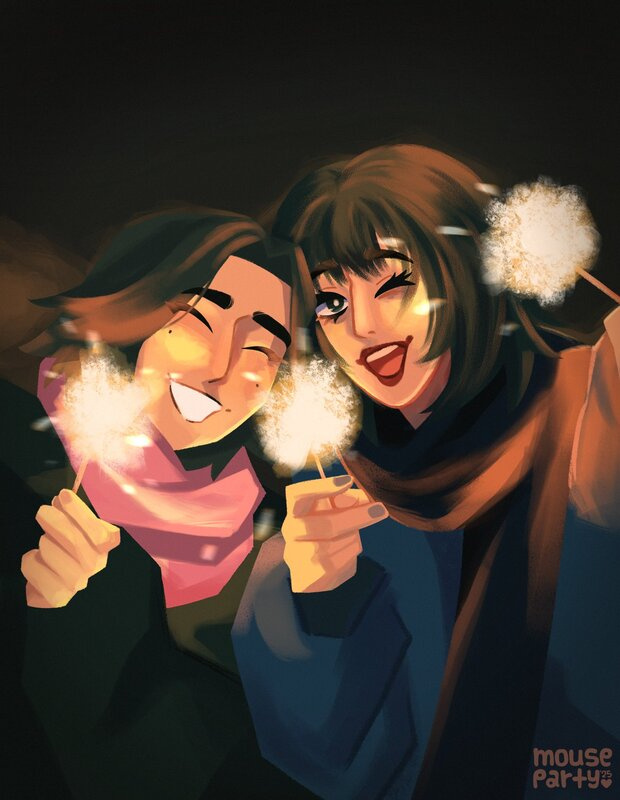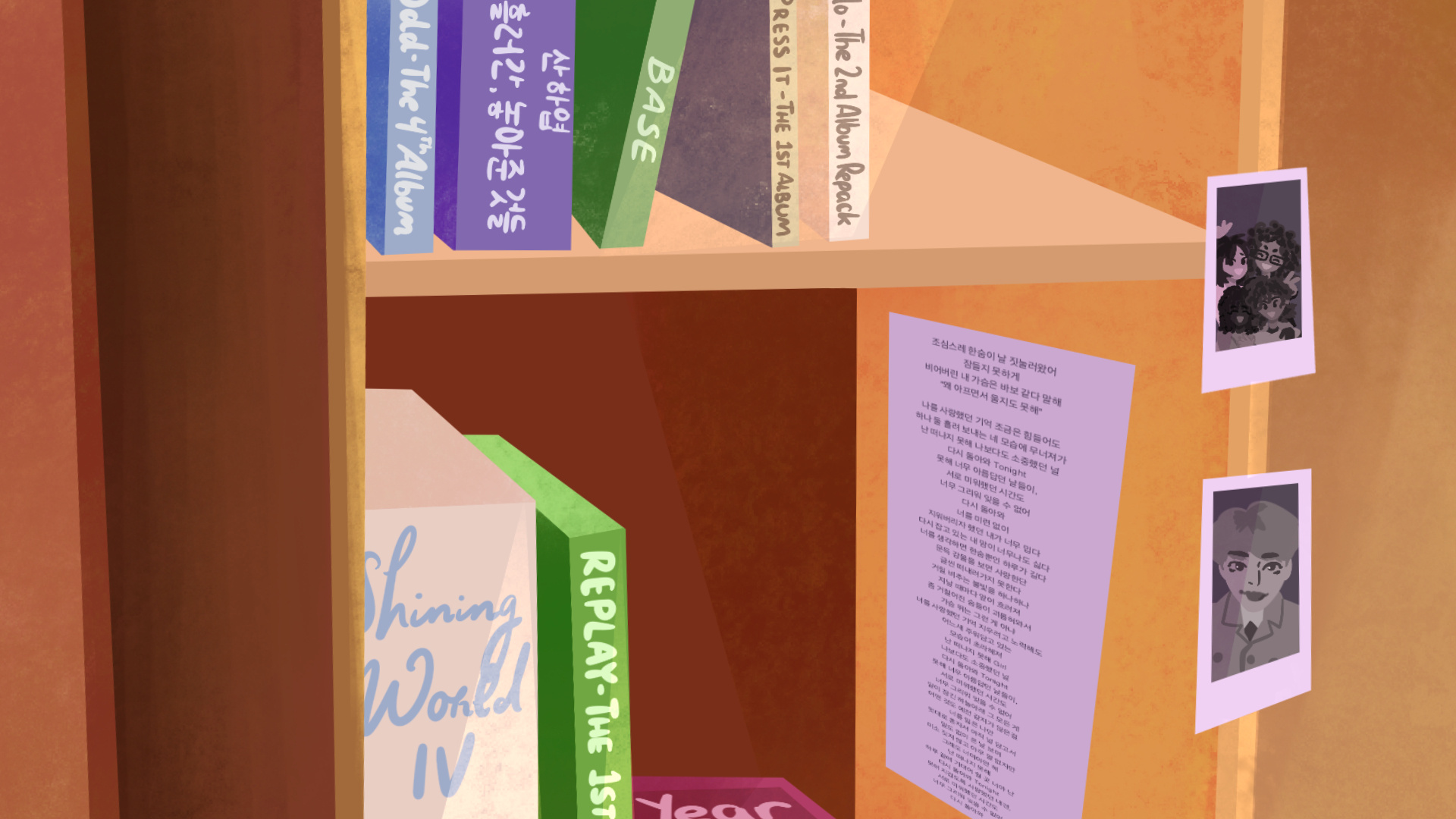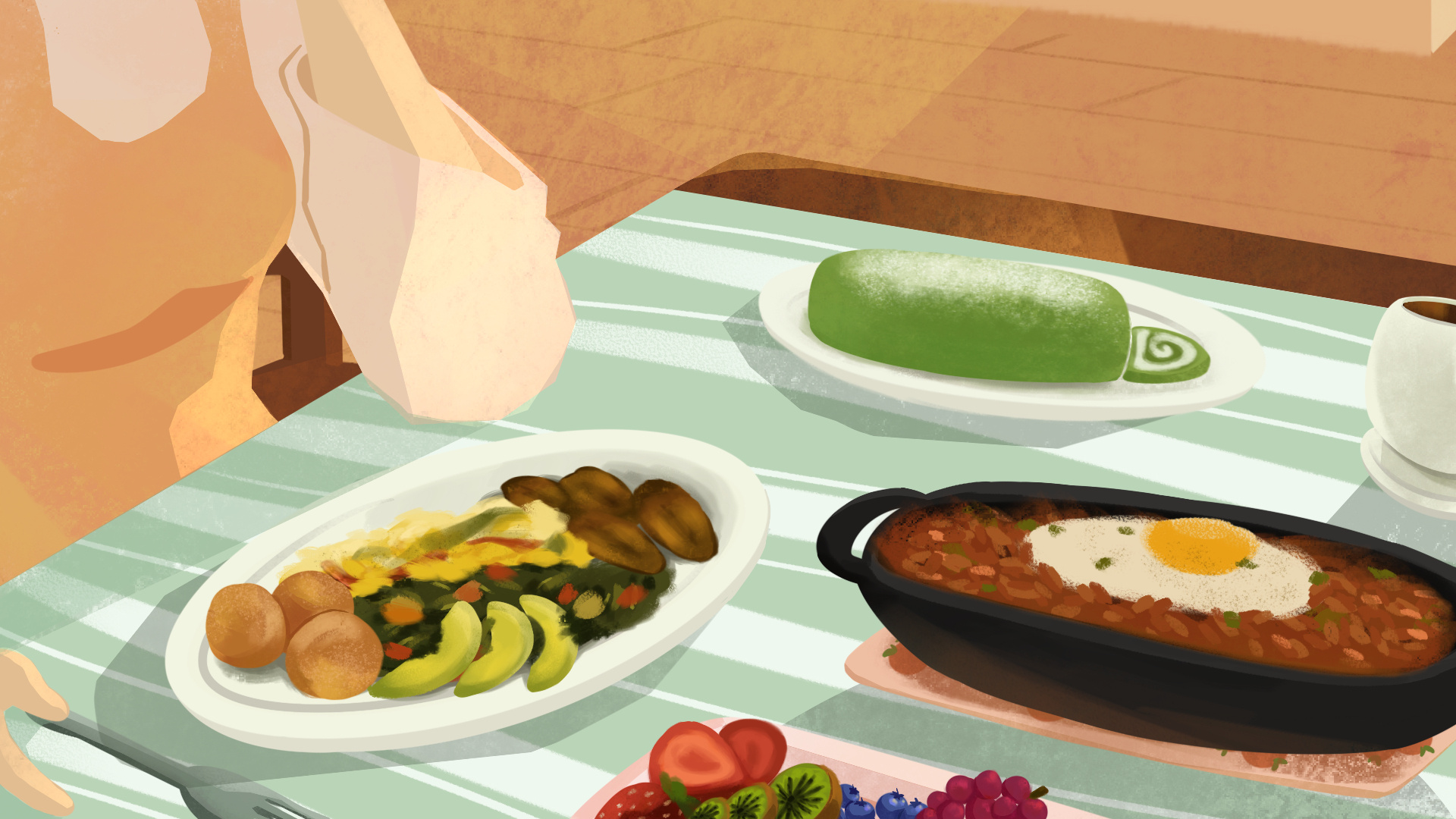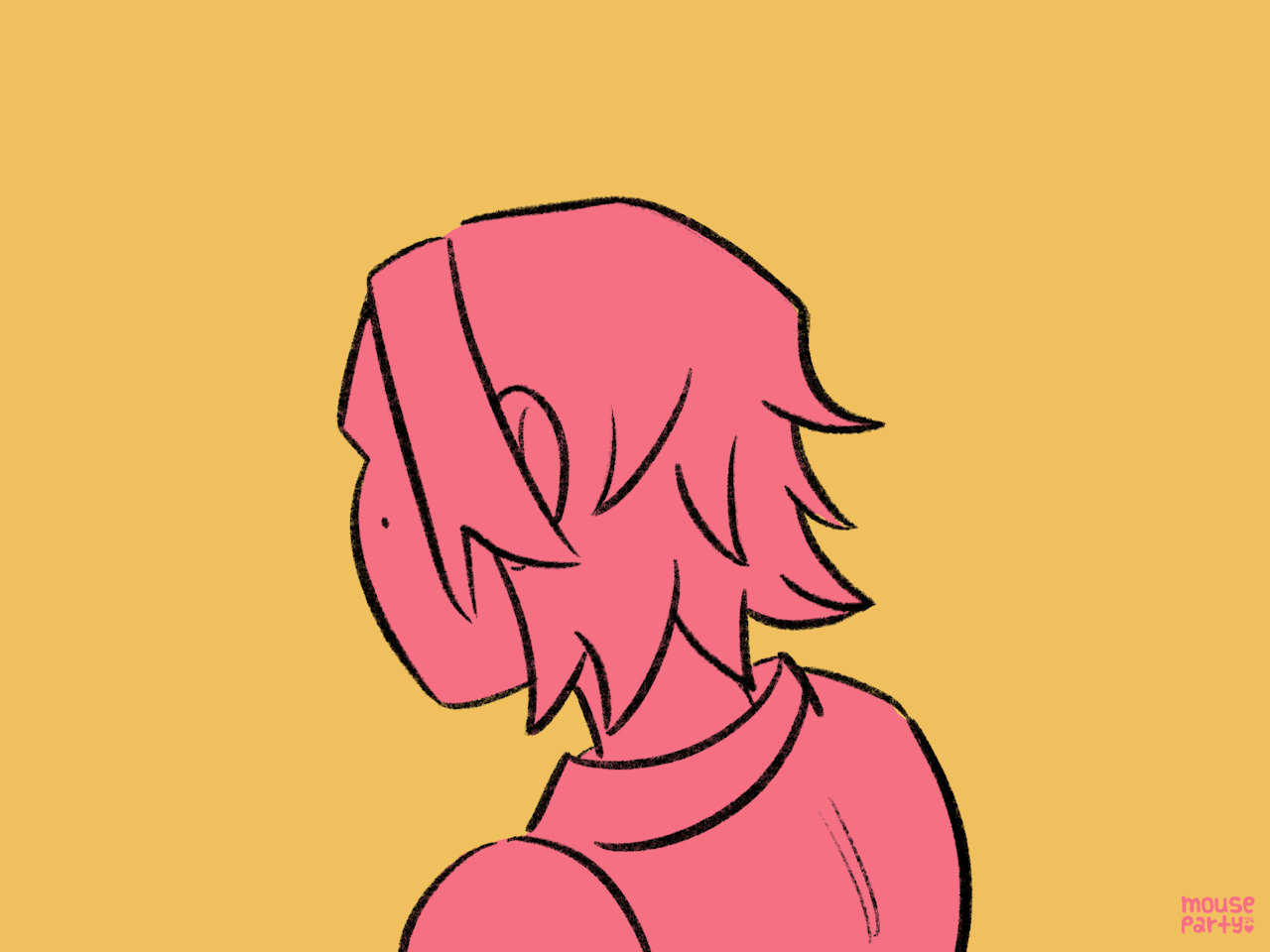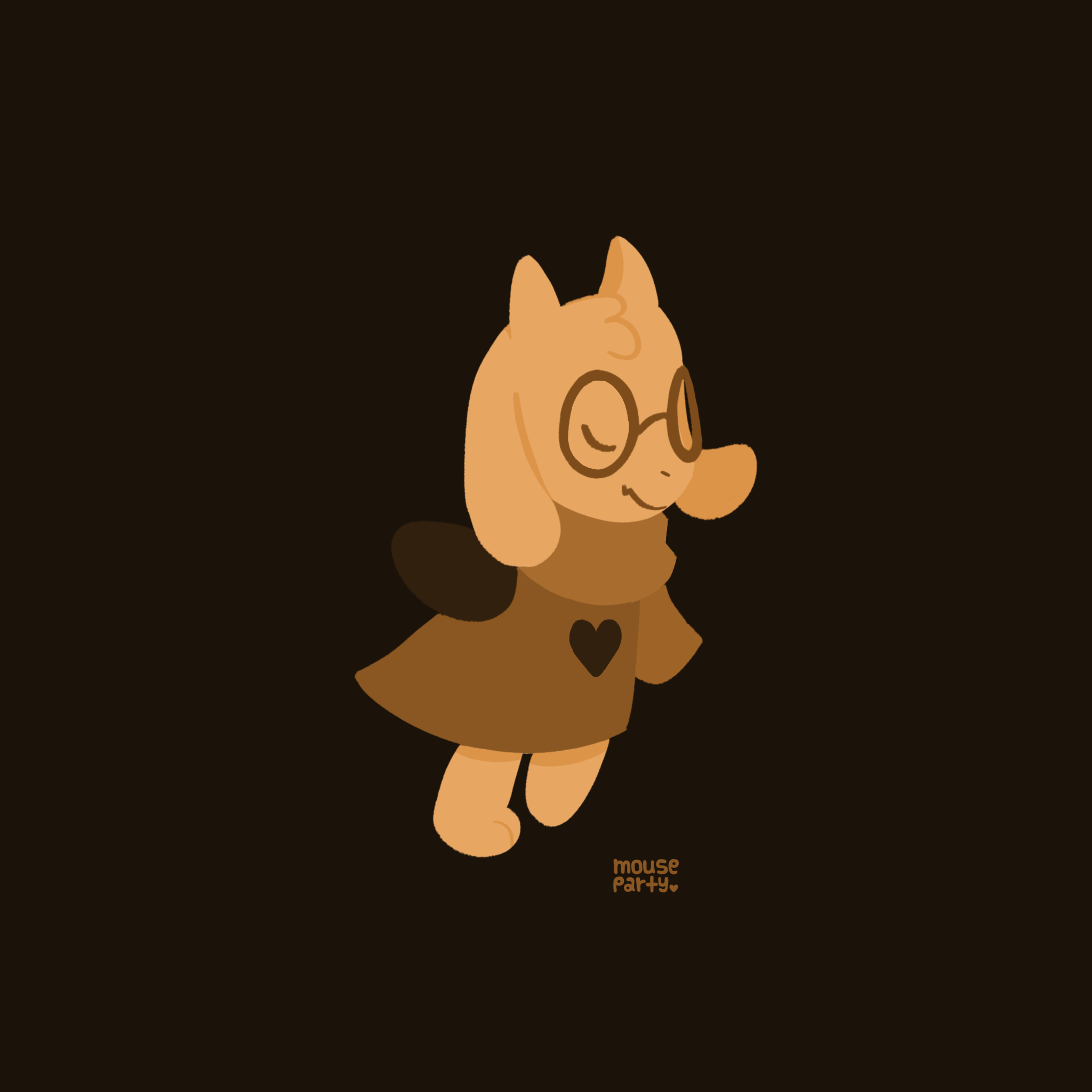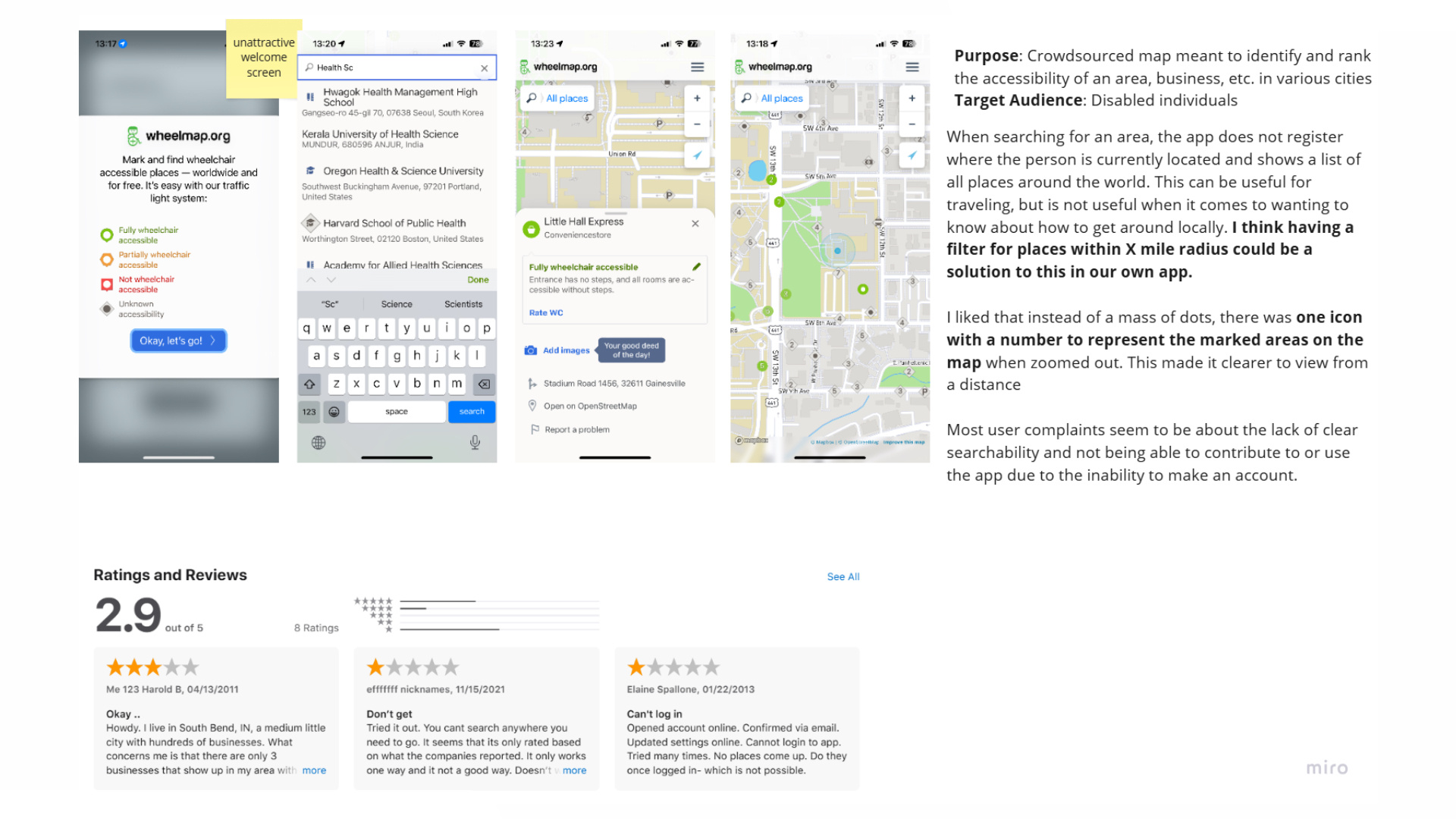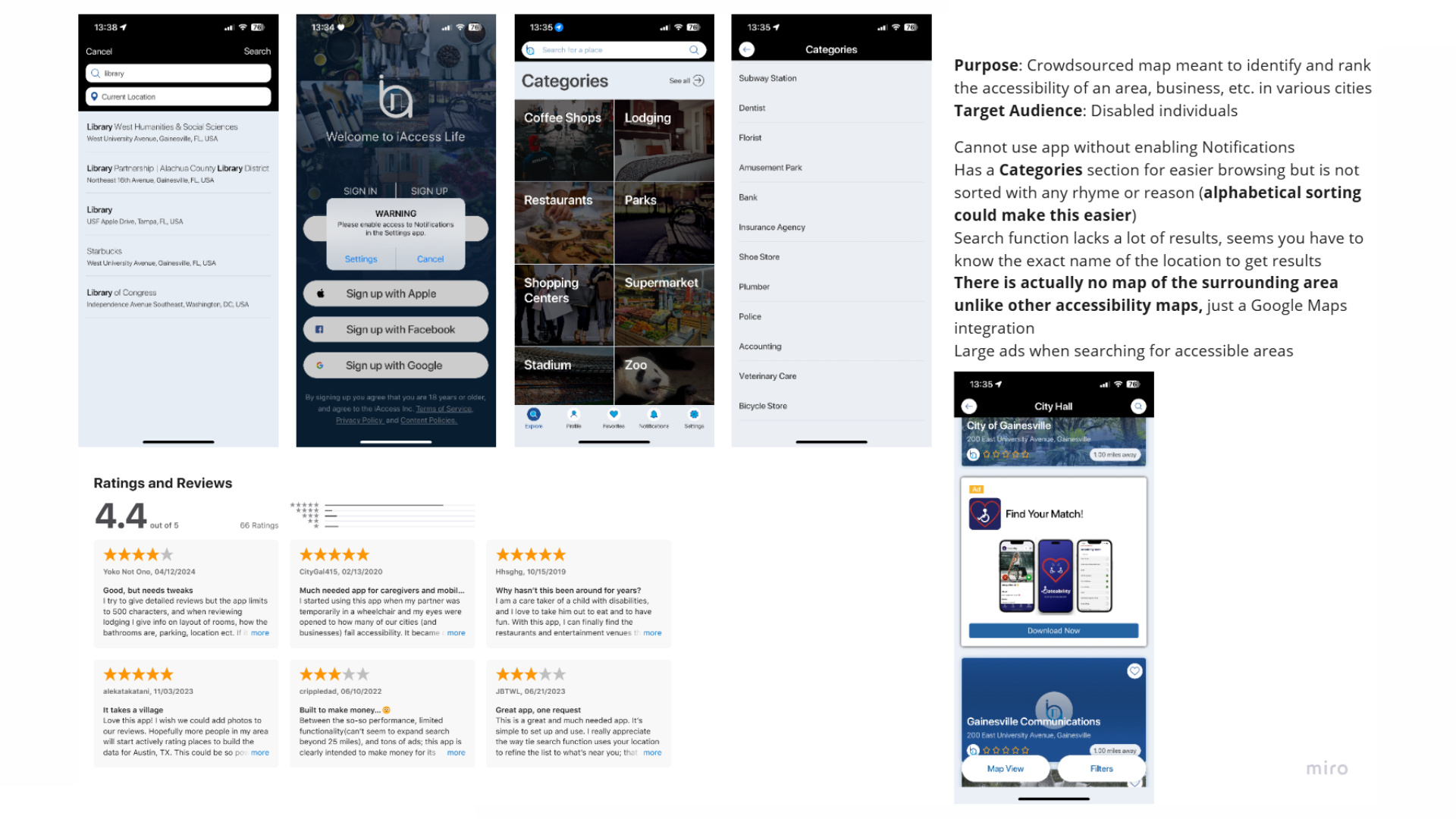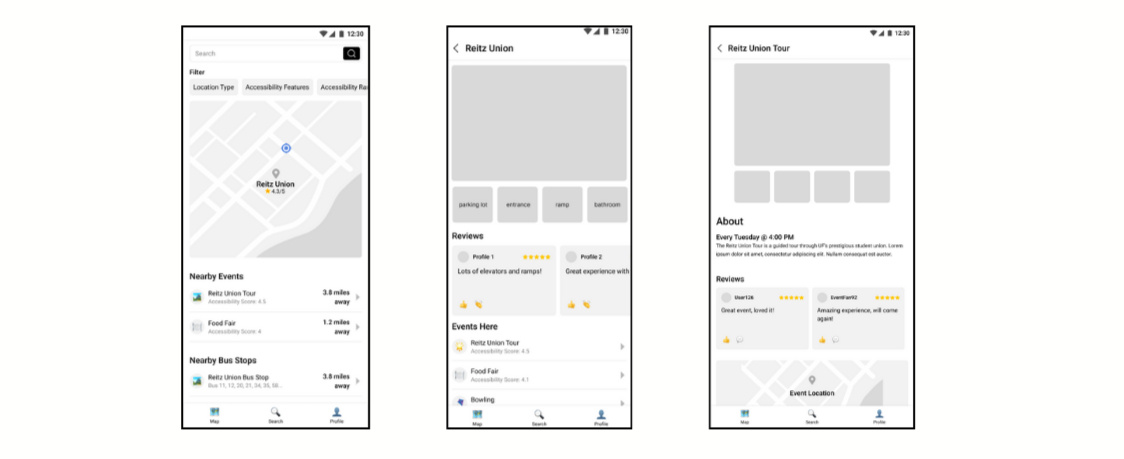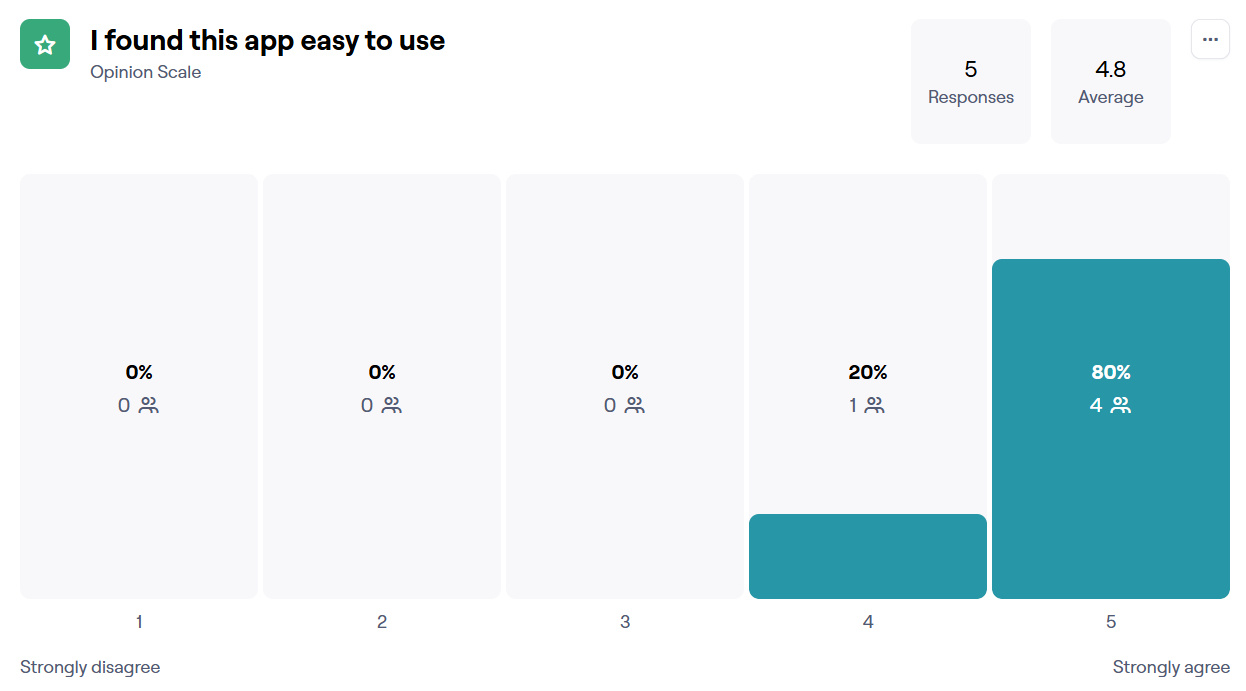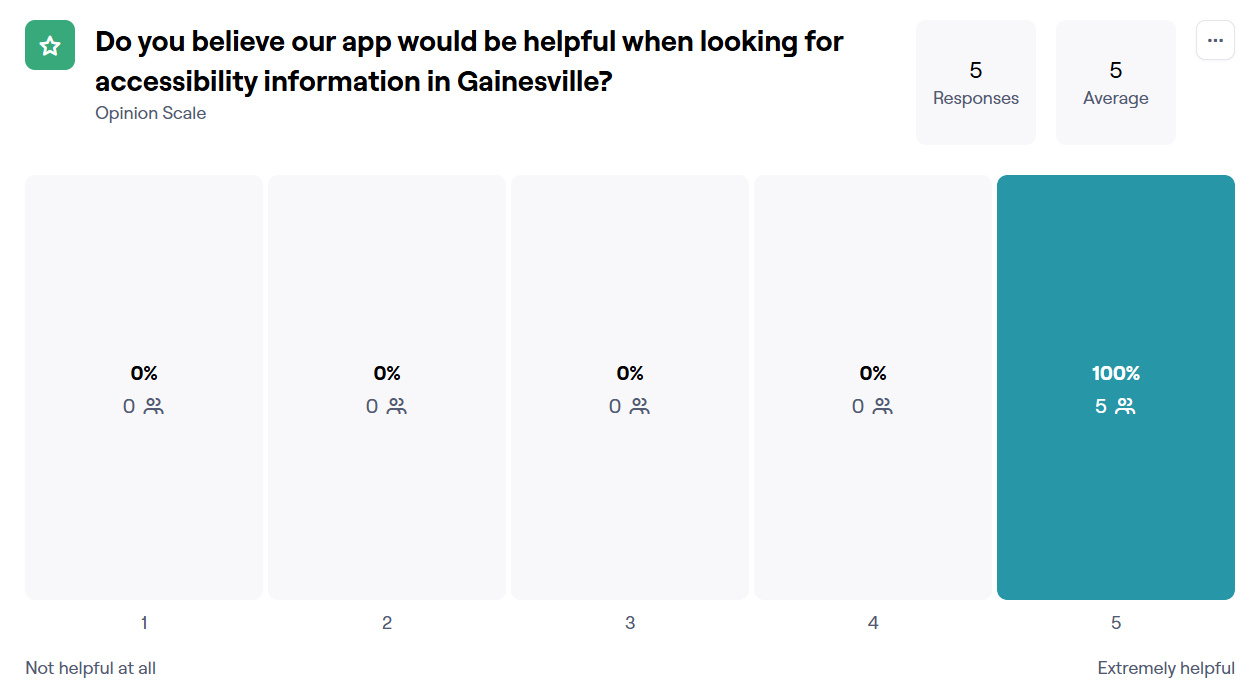GAME DESIGN
Sollum (2023)
2.5D Lovecraftian adventure and puzzle game, developed over the course of 16 weeks
playable here
Snapshot (2025)
Narrative-driven adventure, developed over the course of 36 hours for WiNGHacks Hackathon
playable here
Ad Astra: Jade's Journey (2024)
Short platformer about getting back to the ones you love, developed over the course of 12 weeks
playable here
All the art featured here was done for games that are available on my itch.io page!
itch.io here
© 2025 Summer Rose
CHARACTER DESIGN
PEOPLE
© 2025 Summer Rose
© 2025 Summer Rose
ILLUSTRATION

Daisuke 'Mouthwashing'

HAN of Stray Kids

Jade from Ad Astra: Jade's Journey

HAN of Stray Kids

NEO X GATCHI

OUR SPRING

fan art of Stevonnie from 'Steven's Universe'

Sirius: The Brightest Star

OUR SPRING

Hatsune Miku x Primarina original design

KFC

Hatsune Miku x original fan design

OUR SPRING

Daisuke and Anya 'Mouthwashing'

OUR SPRING

OUR SPRING
animation
© 2025 Summer Rose
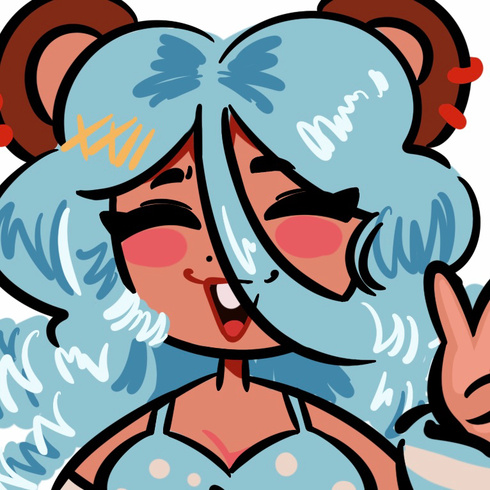
Summer Rose is an illustrator, character artist, and game designer based in South Florida with a particular love for character design, vibrant colors, and all things adorable.When not immersed in a story or creating one of their own, you can find Summer making all sorts of cute art for the online shop, art conventions, and markets!Summer can be reached on various socials at @mousepartyart.For collaborations and general inquiries, please reach out to [email protected].Please direct work-related inquiries to [email protected].
© 2025 Summer Rose
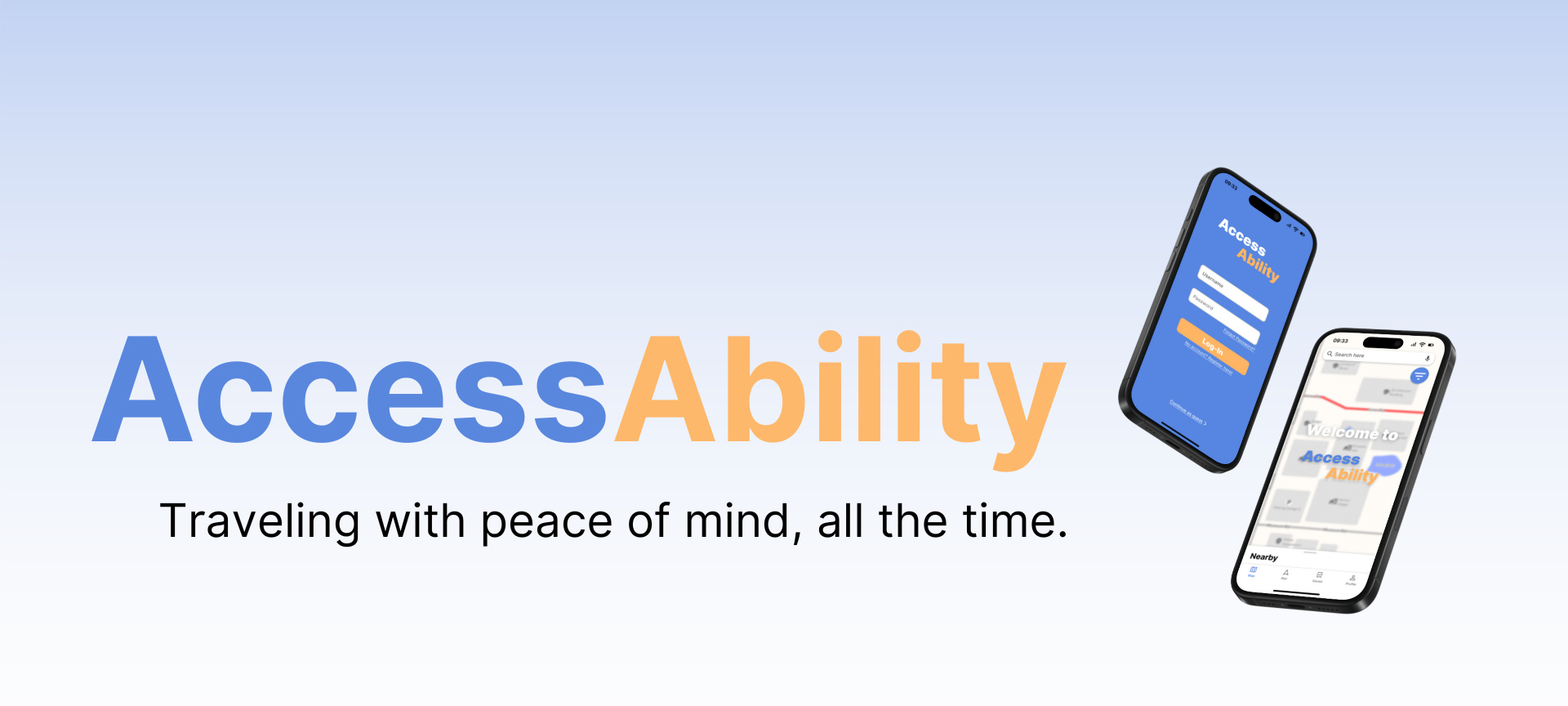
The goal of AccessAbility is to create a navigation application, not unlike Google or Apple Maps, that centers disabled individuals and the need to safely and comfortably navigate their environments.
PROJECT OVERVIEW
🦋 PROJECT ROLE
Team Lead, Research, Ideation
⏲️ TIMELINE
Jan-Apr 2025
🛠️ TOOLS
Figma, Miro, Maze
👥 TEAM
Summer, Ethan, Jimmy, Steve
RESEARCH
COMPETITOR ANALYSIS, INTERVIEWS, ONLINE ETHNOGRAPHY, THEMATIC ANALYSIS
AccessAbility was born out of a need to bridge the gap between traditional map applications and accessibility features. We noticed that most other applications do not have accessibility built into their UI, and this is where AccessAbility wanted to shine.
When conducting competitor analysis research, we found that the apps that already exist to meet this need have shortcomings built into their interface. Some of these include a lack of a proper search tool, low visibility, and lack of filters. Most apps also did not allow for areas to be dynamically ranked, meaning that once a ranking was made, it stayed like this permanently. This stood out to our team as a major flaw because it did not allow for real-time updates in the case of construction or other obstructions, or in the event that an area actually became more accessible.
To better understand our target audience, we conducted five in-person interviews with physically disabled individuals in Gainesville, Florida and collected 30 posts from online forums such as Reddit, Twitter, YikYak, and Facebook. This proved invaluable in determining the direction we wanted to go for our app.
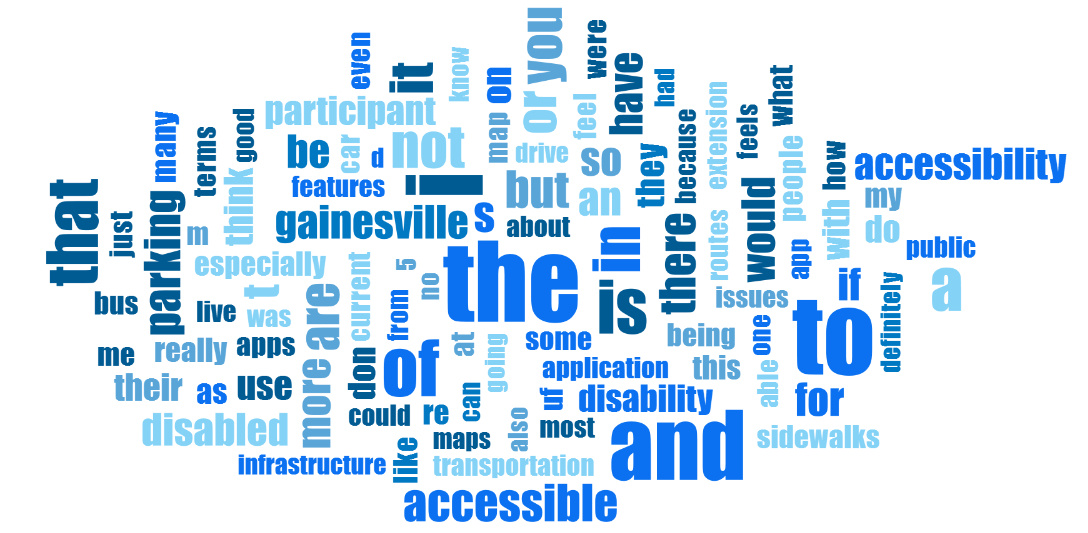
🚗 Concerns with Travel
• Inconsistent bus routes
• Obstructed paths
• Unsure where to park
👤Feelings of Isolation
• Feeling unwelcome in most environments
• Unable to interact with community
♿️ Issues with Access
• No clear marking of ADA buildings
• No clear indication of an area's accessibility features
"I would also like to see an app that prioritises comfort and leisure for disabled people. It’s already uncomfortable doing so many day-to-day tasks, we [at least] deserve to have fun and do so comfortably."
"The world is not built for us [disabled people] in so many ways. [...] it feels like I’m being iced out."
IDEATION
PERSONAS, DESIGN REQUIREMENTS, WIREFRAMES, BRANDING
After doing preliminary research on our target audience and the market, we decided to get to work with brainstorming what would be the most important features to include in the app. To do this, we incorporated feedback from the interviews we conducted and expanded upon features we felt were missing from similar apps. It was also at this point in our process that we decided to scale down and focus primarily on our immediate community (Gainesville, FL), with aims to expand in the future.
Personas
Goals
Anna is seeking ways to safely get around campus while keeping her newly acquired disability in mind.
James would like to be made aware when there are obstructions to his path that could cause complications with his mobility aids.
Kody aims to be actively involved in Gainesville's community and its many events.
Frustrations
Not knowing about Gainesville's accessible areas and feeling left out of leisure activities due to lack of access.
Inability to plan ahead for his commutes due to unreliability of public transport and lack of updates on potential obstructions.
Cannot easily go to events due to lack of parking or knowledge of area's accessibility features.
Solutions
Create an app interface that includes dynamic accessibility rankings for buildings, outdoor areas, and events.
Include real-time updates for buses and ongoing construction, as well as compromised infrastructure.
Have a section of the app dedicated to ongoing events and their location's accessibility features.
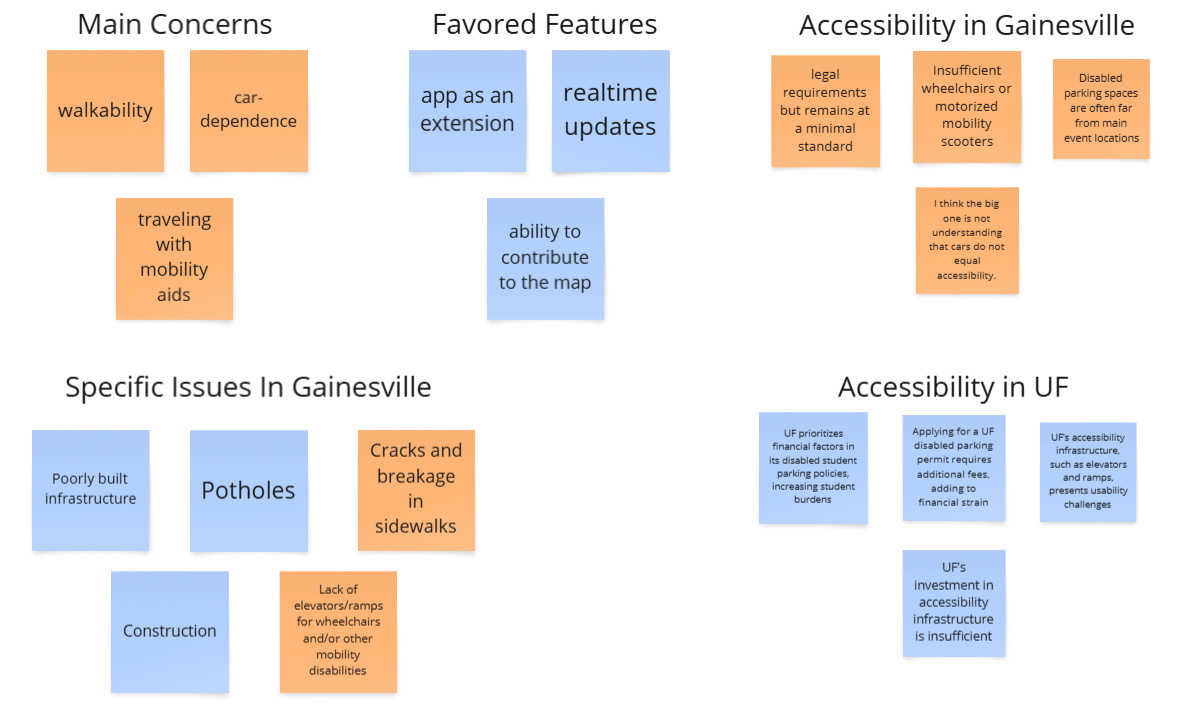
Our first wireframes were iterated upon after getting feedback from our peers and potential users of the app. The first set of feedback asked that we had a more focused set of features and a larger emphasis on navigation. After narrowing down our scope, feedback was focused on ways we could better flesh out the navigation experience such as including filters for a more clear search function. At this point, we also started considering our branding at this point.
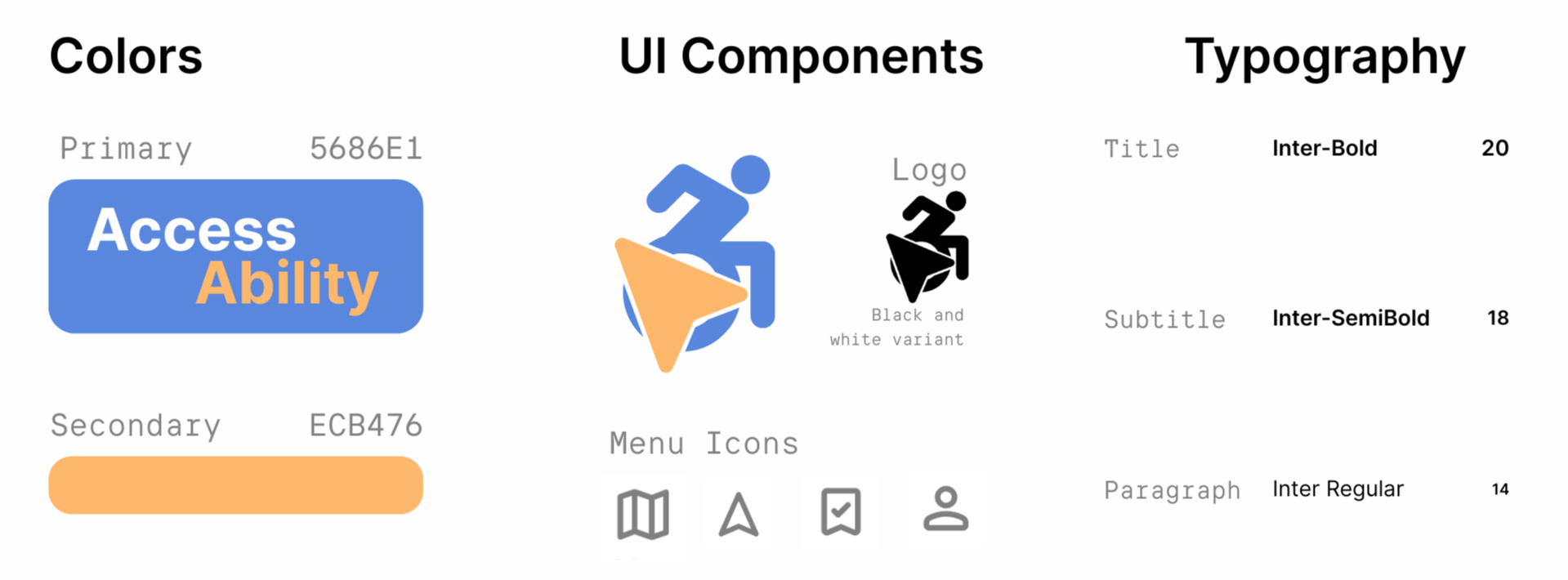
PROTOTYPE
ACCESSABILITY HIGH-FIDELITY PROTOTYPE | FULL PROTOTYPE HERE
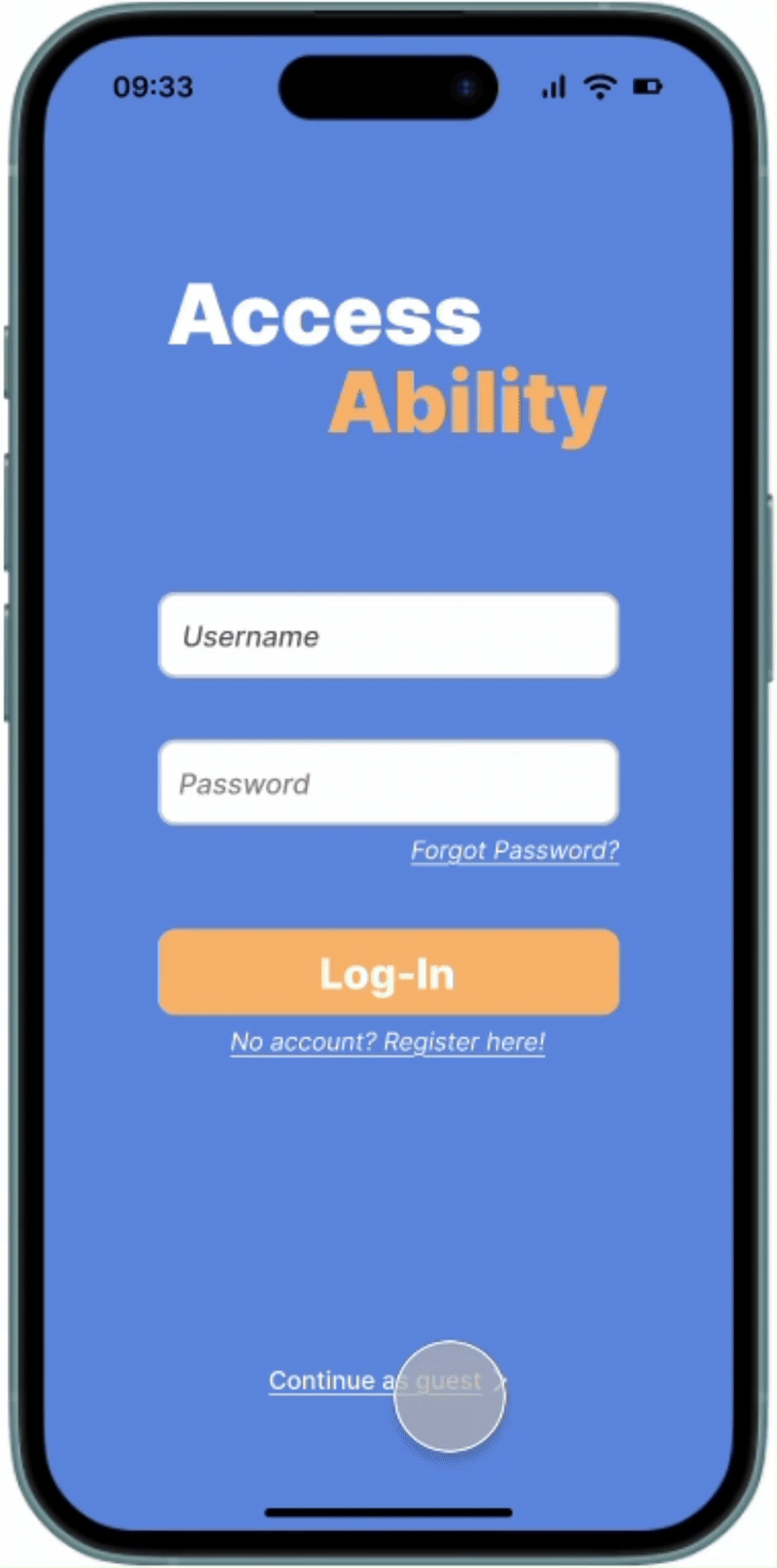
AccessAbility gives users the ability to continue as guests and create accounts later, a feature we found was not present in competitor apps.
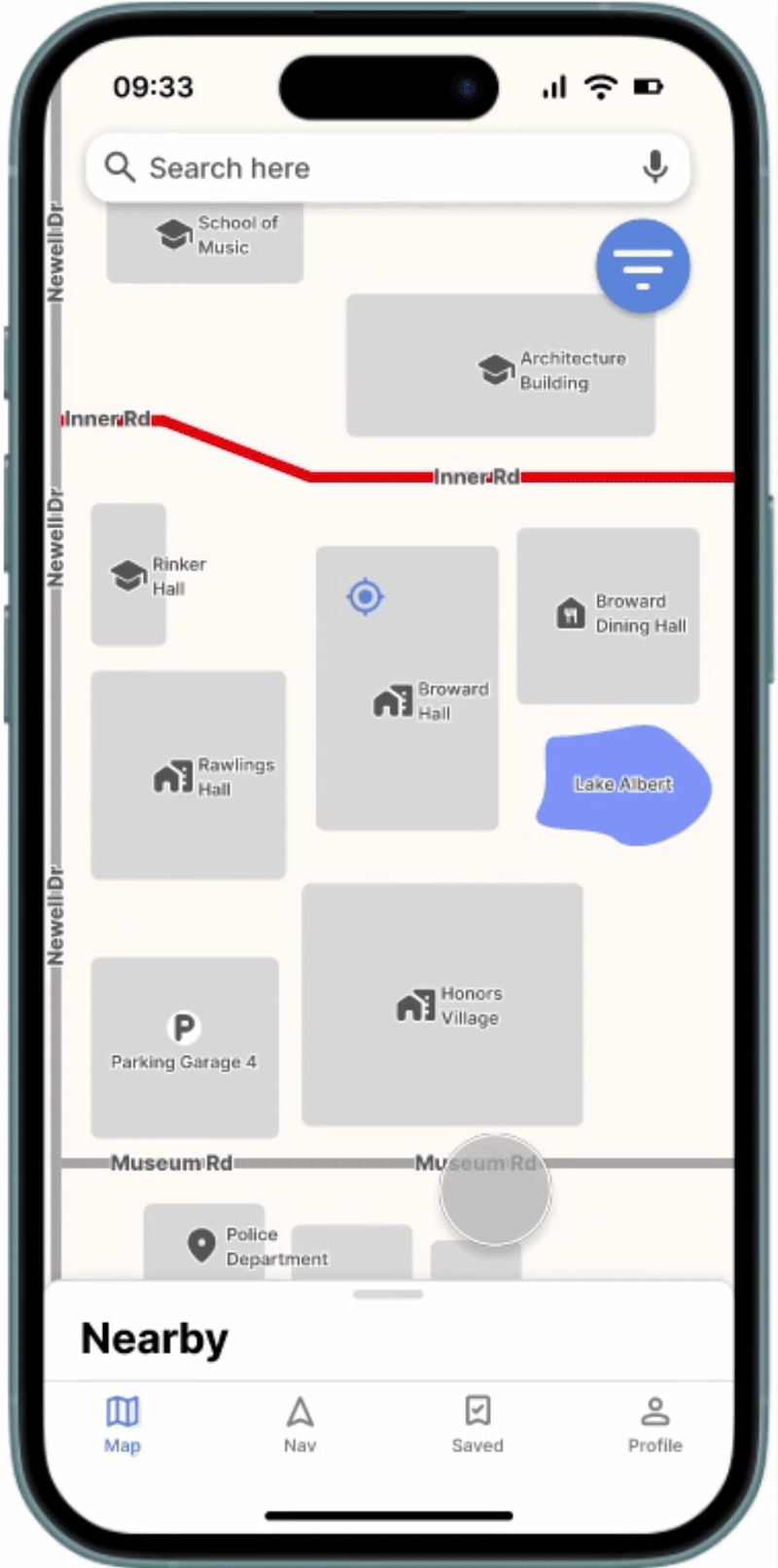
The app opens on an introduction to the interface so users can get familiar with everything's location.

Users can rate an area's accessibility based on the features it does or does not have. Adding photos is encouraged!
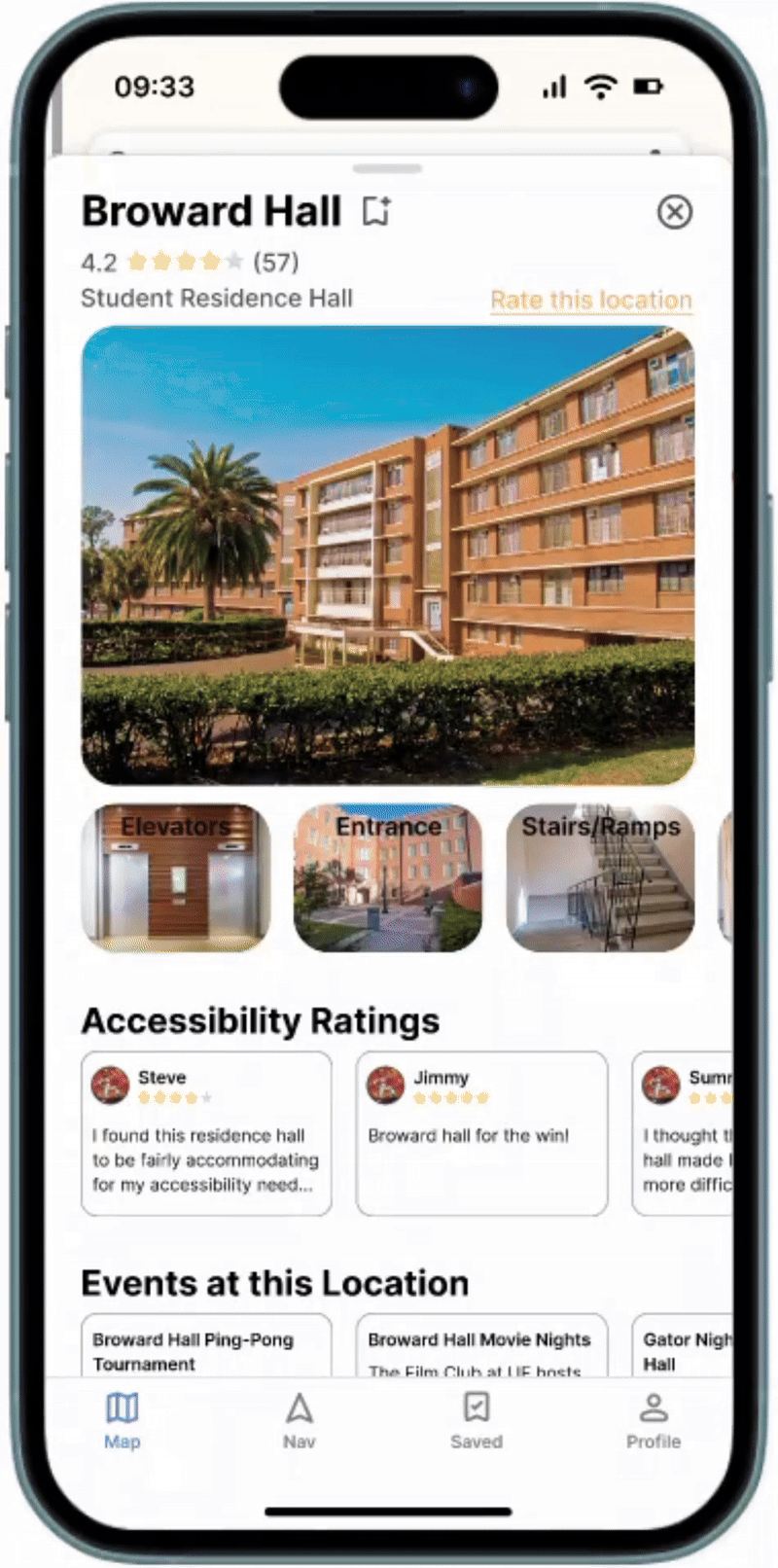
Nearby events are accessible to the user via the 'Nearby' tab or through 'Events at this Location'. The event location and event have their accessibility features displayed for the user's conveninece.
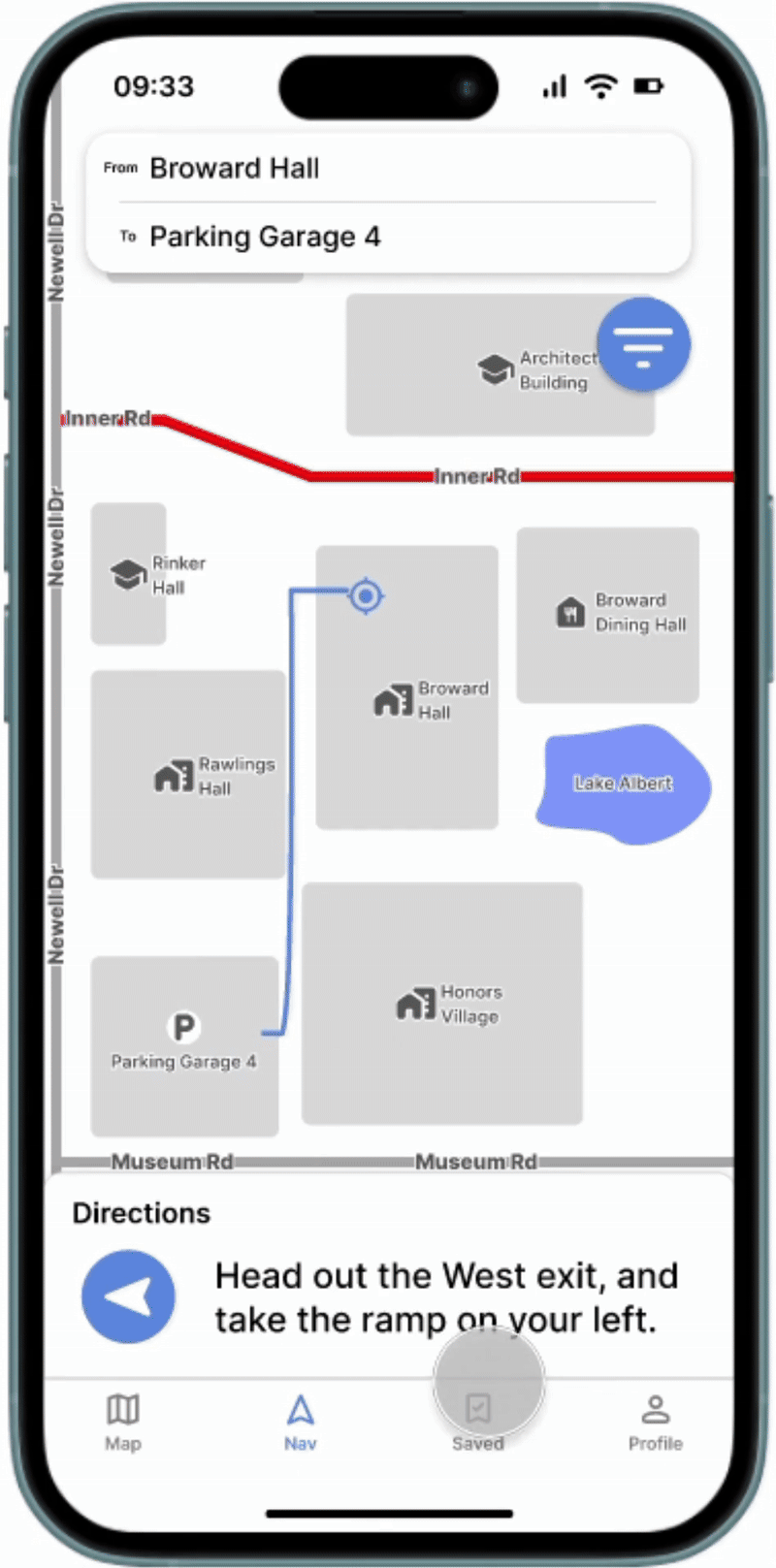
The "Saved" tab allows users to easily access their favorite locations and bookmarked events, and is easily accessible on the home screen.
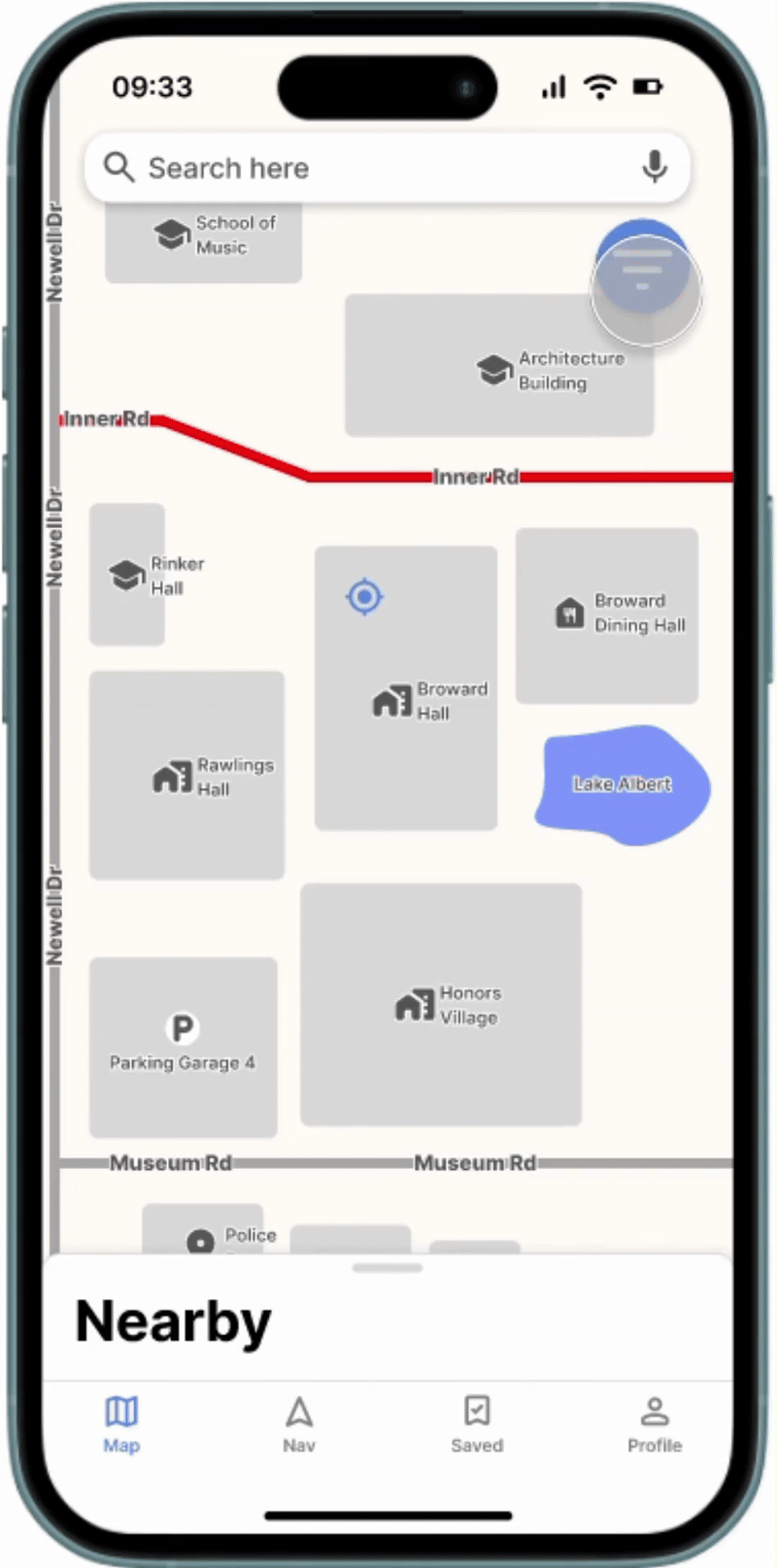
Preferred accessibility features are saved with every search, so users can easily access the areas they are seeking out.
CONCLUSION
USER-TESTING AND FINDINGS
Using Maze, we were able to get live feedback on our prototypes and adjust accordingly. Some feedback incorporated into the final iteration was button affordability and clearer live-road condition updates. Final user testing revealed that the app was easy to navigate and met our goals of providing accessibility information to the UF/Gainesville area.
"I appreciate the effort that was put into creating an app for people like me to feel included in society."
"The attention to features like road blockages or a lack of sidewalks makes me feel seen and considered. This would make getting around a lot easier."
REFLECTION
MY FINAL THOUGHTS
Working on AccessAbility over the last 14 weeks was a worthwhile experience. To be able to meaningfully contribute to my community and center an often-overlooked population was fulfilling in every sense of the word. Going forward, I hope to see more innovations in design that don't just consider, but center disabled individuals.

